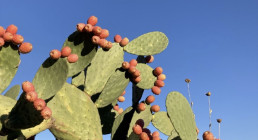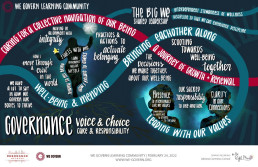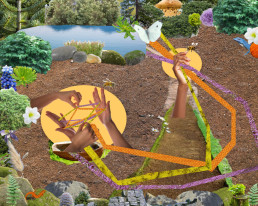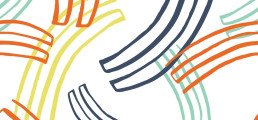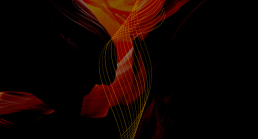Applying regenerative practice to systems beyond place — some thoughts
September 12, 2022Transformation,Blog,SystemsSystems Change,Collaboration,Systems Change
By way of introduction: spiky fruit
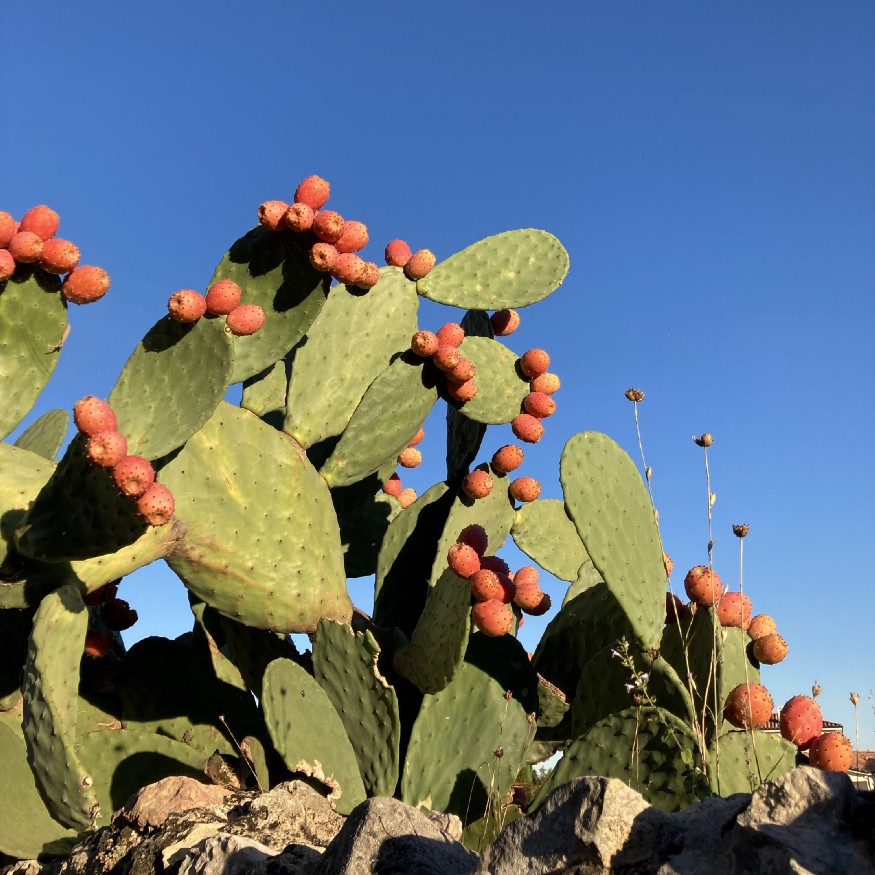
It’s the first of October, and I’ve been writing this piece for over half a year! Yesterday this cactus caught my eye. The spiky leaves and the ripe fruit spoke to me of the necessity to take these unpolished thoughts and offer them up. If handled carefully and peeled, the juicy prickly pear can make a great salad. It’s painstaking and potentially irritating work. The flesh is not as flavorsome as other fruit, but it’s what grows and abounds here and now. So perhaps you can enjoy the thoughts that follow in that spirit!
Rising to the challenge
Our societies and our living planet are struggling to survive with the threat of climate change, mass extinction of species, depletion of the living resources of soil on all our continents — the list goes on. In the face of this regenerative work offers the hope of enabling the extraordinary capacities of living systems to adapt and create the conditions conducive to life.
There is an active community of regenerative practitioners supporting change-makers the world over to work from the principles of living systems in order to revive and evolve the places and the systems they are working with. Living systems are grounded in places, adapting to local conditions and contexts, evolving strategies to thrive in the myriad diversity of environments, from hot deep sea vents, to estuaries where sea and land intermingle, to cloud forests of the tropics, to green ‘deserts’ of grassland. The source of regenerative practice is found in the dynamic relationship of life and place, and the inevitable relationship of people to and within other living entities. People, human societies, are living systems, and as such we are deeply connected to the places we live and depend upon.
However, as human societies have evolved over the last few hundred years into a global civilization, and many of the challenges we face are playing out on the scale of the whole planet, regenerative practitioners are called to find ways to apply our living systems approaches to activities that seem disconnected from “place”. When we look to change international business supply chains, when we design digital services, when we think about what sustainability means for huge global retail corporations, how can we bring regenerative practice to bear? In an age where the shift to online working has been accelerated through the Covid-19 pandemic, and I write this from a co-working space in the south of France as part of a team with people across four continents, how can the potential of life-regenerating work step into and beyond hyper-local “place” as a contribution to a societal shift so needed this decade?
What follows are a few thoughts, deeply influenced by my work and dialogues with Regenesis, Future Stewards and other regenerative practitioners. These thoughts have formed as I apply this practice to the School of System Change, an international endeavour to support change-makers navigate the field and practice of systems change, growing their capacity to work with complexity and uncertainty, and to contribute to great shifts in business, civil society, government, communities and philanthropy.
Disconnected from place?
I deliberately speak of activities that seem disconnected from place. Our human capacity to understand ourselves as disconnected from nature, from living systems, from place, has been honed over several hundred years of Western mechanistic thinking. Those of us who have learnt to understand our world in this way continually develop constructs — both physical and conceptual — that reinforce this premise of separation or non-dependence on life. We build global digital platforms with remote-working teams. We manage supply chains from warehouse to container to truck to logistic platform to supermarket in a complicated chain through multiple built environments made of concrete, metal, tarmac. We speak of dematerialised banking, and have decoupled finance from the “real” economy. We manage agricultural production through sterile seeds and petrochemical fertilisers.
I have learnt to see how all of these activities are nested within the living systems of our planet. The people working behind their screens or their steering wheels are alive, they need food to nourish them that is alive too (or at least was recently!). Our businesses, communities and cities are complex living systems with the same needs and metabolic functions as a forest ecosystem: nourishment for energy, clean water, purification of waste, temperature control… The people and places impacted by “dematerialised” activities may be widespread and seeminging disconnected, however they are indubitably alive, and in many contexts in need of activating their regenerative potential to tackle increasingly difficult issues of physical and mental health, pollution, soil degradation, and adversity.
Pretending that a human activity has no grounding in living systems and places — because of its digital or global nature, because it involves commodities sourced via intermediaries and their warehouses — carries a high risk of creating harmful externalities to the living systems that are inextricably linked to these activities but remain invisible in our designs. This decoupling of our activities from the living systems we operate within perpetuates the deep-seated pattern that has led to the crises we are living into today, from climate change to the global pandemic.
Putting living systems back in the equation isn’t easy work, but it is possible, and deeply rewarding. Where might we start?
I am offering three sets of practices that can support a regenerative outlook, even when working with systems that seem disconnected with place:
- Seeing life in everything
- Working with specificity not generic outcomes
- Starting with the care we hold for our fellow living beings
Seeing life in everything
The first set of three practices are helping me develop my ability to see living entities — people, organisations, places — as alive.
Working with qualities of aliveness
One of the ways I have learned to do this is through noticing three qualities of aliveness (from Regenesis):
- evolution — organic development and unfolding, where things aren’t going to plan, but are moving and adapting to uncertainty and complexity, and there is no going back!
- viability — relational dynamics that are necessary to survival over time, relationships to wider ecosystems, be they food webs or markets or fields of shared endeavour; and
- vitality — the spontaneous expression of life force, uniqueness, purpose and energy that can be felt when a person or an organisation is flourishing
These qualities are interrelated — the vitality of a living system needs nourishment to be viable over time, and continuously adapts and evolves as the world changes around us.
Noticing these qualities helps me engage with living systems — including human systems seemingly disconnected from the living world — as inherently alive. It is also a way into identifying which capacities might need enhancing to ensure ongoing life in these systems.
Changing metaphors
Our mechanistic ways of thinking are deeply anchored in metaphors we use all the time! So I practice changing the metaphors and looking for life-sourced images to describe what’s going on. How might we grow capacity rather than build it? How might we look for nodal interventions rather than leverage points (a node refers to a place in a living entity where many flows come together, whereas a lever is a component in a machine)? How might we seek evolution not scale?
Sometimes the more ecological or metabolic metaphors can seem a bit too hippie, and I don’t always adopt them, however the conscious practice of identifying which paradigm I’m thinking from through the language I employ is very insightful. I have noticed how comfortable it is to revert to terms that imply predictability and the ability to control outcomes! (building capacity, driving change, measuring impact — just some examples) Adopting life-sourced metaphors implies leaning into uncertainty, working with what is emerging, and thinking of what I do as a contribution to wider work.
Looking for connection to place
The third exercise is trying to ground the systems I’m working on in place — even if these places are multiple and seemingly disconnected, like across a supply chain. Reminding myself that life is rooted. That even hydroponic agriculture relies on nutrients that have come from the living earth — somewhere! Our office sites have footprints on the ground, and are situated in complex ecosystems.
Envisaging the ways in which our activities are connected to and dependent upon living places, and then questioning the impacts on the vitality, viability and evolution of these places — at multiple scales — can yield insights both devastating and full of opportunity for change. Devastating because we might notice how much life has been destroyed as we create an inert built environment for ourselves, for example pouring concrete over the earth so that the microorganisms beneath will be disconnected from the flows of water from rain and nutrients and energy released into the soil through plant roots. Full of opportunity because we can amplify the extraordinary qualities of life which will continue to evolve and regenerate, through multitudes of human innovations that work in symbiosis with the living world.
Looking for this connection to place in the history of the organisation is often a good place to start, as the identity and culture — however international in its operations — may well be imbued with the unique characteristics of the ground it sprang up from in the beginning.
Working with specificity not generic outcomes
This set of practices is helping me work with the unique characteristics of the systems I’m involved with to identify differentiated and coherent strategies for action, producing unique and positive outcomes.
I often hear the ask for a definition or catalogue of what might be “regenerative outcomes”. In the face of the crises we’re experiencing, and with the best will in the world to effect positive change, people and organisations want answers, and clear how-tos. I hear the urgency, and the need for simple, actionable responses. However, I am learning to first respond with a set of questions to reach differentiated answers — as living systems are differentiated and there is no one-size-fits-all. The set of questions below can quite quickly lead to answers that in turn will be much more powerful in unlocking life-regenerating processes.
The overarching starting question here is What is the essential characteristic or nature of what we’re working with?
Some of the ways into this question are
- What is the unique purpose of this business or endeavour (which may be deceptively different from the mission statement, being more what is alive in the business as a whole, it’s core pattern that repeats across scales from teams to international operations, and configures this organisation’s contribution to a wider sphere)
- What is the core property of the material / commodity / species we’re working with? How might we work with the inherent properties of aluminum, or cotton, or soap — for example — to work out how these can be expressed in service of life?
- What are living systems like round here? How have they — people, plants, animals, micro-organisms — adapted to the specific living conditions of this place? What might we learn from these strategies?
Starting with the essential characteristics of what we’re working with is a route to seeing the potential that could be expressed if we lifted these up to serve a living world. It can help us be open and curious. We can move beyond the generic plan to “plant trees”, to question which essences, which combination of context-appropriate species, we might encourage in this particular place.
We can go further to understand that if we’re a clothing company, for example, planting trees is all very well but it doesn’t harness the potential of the core of what we do — the living materials, people and identity that are at the centre of our activity. The regenerative contribution of a luxury brand will be distinctly different from that of a high-street clothing brand. Recognising our unique approach, and going beyond market differentiation to putting this in service of the living systems we’re involved with, will highlight practical actions we can take leading to powerful regenerative outcomes.
Starting with the care we hold for our fellow living beings
One of my recent insights about regenerative work is that it stems from a deep care about the world, which taps into vulnerability, and therefore requires a certain kind of intimacy and attention. When we care, we are in relationship being to living being. We can be curious about what is specific about what is happening here and now, we can be empathetic — feeling from the place of the other, we can work with emotional and intellectual intelligence together, bringing our whole selves to the situation at hand.
It’s difficult to talk about how much we care for the living world in situations where everything around us (our office space, the board room, our managerial practices, our scheduling habits) are designed from mechanistic assumptions and “man-made” materials. Paying attention to what is alive, even in these contexts, can require a shift in how we show up and what we are giving our attention to. Put another way, it’s about being as much as doing.
This leads to a new set of questions around the enabling conditions for some of this work:
- How might we let ourselves see our fellow workers, customers, citizens as whole people striving to live nourishing lives?
- How do we move from concern for a statistic (e.g. numbers of mental health-related emergency calls) or worry about a trend (e.g. decreasing yields from ever poorer soils) to care about the living beings — the people, the ecosystems of microorganisms in the soil — we’re so interconnected to?
- What are the qualities of space we might need to tap into this other way of knowing and deciding what to do in the face of the overwhelming challenges we’re facing?
Bringing regenerative practice home
I know I’m a conversational learner, and I thrive in deep conversations and spaces of inquiry around these sorts of questions. I can see how through these collective moments my thinking about the world is evolving, and informing my work in the long term. I also practice micro-experiments to take my thinking into my daily life in a shorter timescale — these range from spending a whole summer without killing a single mosquito as an experiment in respecting the equivalence of life-forms, to fermenting kimchi in my kitchen, to applying the vitality-viability-evolution framework to all sorts of projects, situations and relationships at work and at home through five-minute sketches.
This may not be your way of connecting with aliveness. At an online team meeting a few months back I was struck by the beautiful diversity of situations when people feel most alive — from on a sea shore, to being in crowded public transport. If you invite yourself into a space of caring for the living world for a moment, what is it you notice? And how might you carry that with you into the big, wide world, as a root to help you with your very unique contribution to systems change?
originally published at School of Systems Change
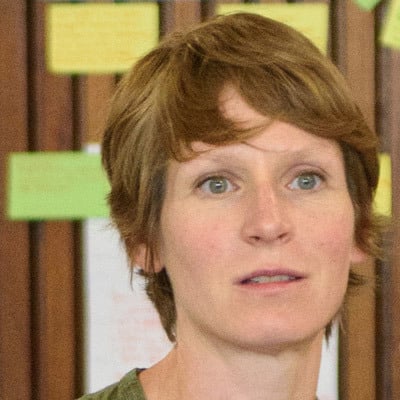
Laura Winn is head of the School of System Change at Forum for the Future. She works to develop the School as a networked organisation that supports change-makers from diverse backgrounds and contexts, providing them with new capabilities to tackle an increasingly complex set of sustainability challenges. Laura's own practice stems from living systems and regenerative approaches, learnt and applied across multiple small-scale and large-scale projects.

Network Weaver is dedicated to offering free content to all – in support of equity, justice and transformation for all.
We appreciate your support!
donate in the box above or click here
Belonging to ourselves, each other, and the earth
September 6, 2022The Big Picture,Transformation,Blog,Transformation,EquityDismantle Racism,equity,Systems Change
From decolonization to... re-indigenization?
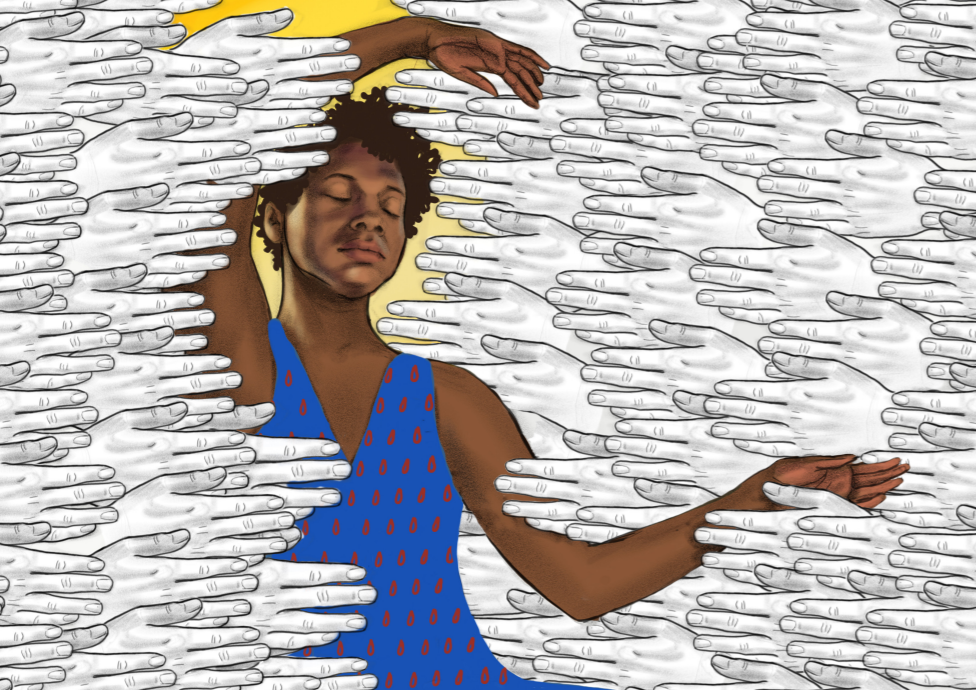
I’ve found myself increasingly interested in the promise of ‘embodiment’: the possibilities inherent in the seemingly simple act of being attuned to what our bodies are telling us. Thus far I’ve explored that concept primarily through the lens of the self, of the ‘I.’ But there’s more to it than that, something that feels powerful.
So today I want to explore the transformative potential of learning to sense and feel at three different levels: what in Building Belonging we call the levels of “I, We, World.” The promise of belonging is the promise of integration: it’s about belonging to ourselves, to each other, and to the earth.
“All transformation is linguistic”… and embodied?
This topic is especially hard to think and write about clearly because we lack the language. It’s difficult to conceptualize something if we can’t name it (an insight made famous in Betty Friedan’s discussion of “the problem that has no name.”) It was perhaps with this in mind that Peter Block provocatively wrote “All transformation is linguistic.”
I think he’s right… and the sentiment is incomplete. I do think the power of naming something is itself a transformative act: it allows us to see things in a new light, to understand an aspect of our experience that had thus far remained inaccessible. As Robin Wall Kimmerer wrote:
Language is the dwelling place of ideas that do not exist anywhere else. It is a prism through which to see the world.
But language is a starting point for transformation; it creates possibility. To realize that potential, however… requires embodiment.
This is the core insight of the emerging field of somatics, which deals with the “soma” (the Greek word for “body”). It’s at once an obvious and a radical idea: of course we move through the world in physical bodies, and of course those bodies inform our perceptions. And yet: Western culture tends to dismiss any forms of knowledge or information that are not “rational,” and emerging from the brain (I think, therefore I am). Indigenous cultures the world over have always held a more expansive view of human experience, talking instead of the heart, mind, body, and spirit. As Pat McCabe (Woman Stands Shining) notes,
The intellect is the least reliable way of knowing anything.
So I want to explore here (as always) the possibility of the both/and. Yes there is a power in naming something, in rendering a concept intelligible and accessible through words. And that’s not enough. There are other ways of knowing, feeling, and sensing… and it is these other ways that I want to explore today… at the level of I, We, and World. As MawuLisa Thomas Adeyemo said:
If we listen to our body, there is so much we can learn.
Belonging to ourselves: decolonization
There has been an emerging discourse in recent years about decolonization. There’s more there than I can unpack in this post, but the core concept is captured in the word itself: it is the antithesis to colonialism. It is a process of undoing, of unlearning… of practicing a different way of being.
Colonization is about conquest, growth, domination, enclosure, enforced scarcity, certitude about a singular way of being… it demands assimilation. Decolonization invites us to return to a world before colonization, to undo the ravages of the colonial mindset: to replace domination with partnership, growth with regeneration, conquest with harmony, scarcity with abundance… and embracing multiple ways of being. Decolonization invites a return to right relationship: with ourselves, each other, and the land on which we depend. We can understand colonization as a form of trauma at multiple levels. As Susan Raffo reminds us:
All trauma is collective, but we experience it individually.
This experience of trauma and fragmentation inspires resistance; humans are resilient, and we seek re-integration. Quoting Jacqui Alexander, the Gesturing Toward Decolonial Futures collective (amazing name!) puts it this way:
The material and psychic dismemberment and fragmentation created by colonialism also produce “a yearning for wholeness, often expressed as a yearning to belong, a yearning that is both material and existential, both psychic and physical.”
Yes. That’s it: a yearning for wholeness, for belonging. This is the desire animating the decolonial urge.
I’m coming to believe that the surest and swiftest path to decolonization is through embodiment, through learning (remembering) to feel and hear what our bodies are telling us. I was delighted to finally find the word for this last year: interoception describes our felt sense of our body’s internal states (hunger, anger, tightness in the chest, lump in the throat…). This is where most somatics work is done: at the level of the ‘I’ and our relationship to our own bodies. And in a cultural context that teaches us from our earliest ages to disregard and override what our bodies are telling us… it’s revolutionary work.
So here’s the idea I want to offer here: interoception (intentional embodiment) is one powerful way we can practice the art of decolonization. It is about reconnecting with ourselves, and orienting toward this truth: the body knows… if only we listen to it. There are many ways to practice: yoga, somatics itself, other forms of bodywork that invite deeper attunement to what our bodies are telling us.
Belonging to each other: cultural somatics?
Here’s another truth I’m coming to: all transformation is relational. If no one is an island… then surely our efforts to transform must start from that premise? Here’s Parker Palmer:
If we are willing to embrace the challenge of becoming whole, we cannot embrace it alone—at least, not for long: we need trustworthy relationships to sustain us, tenacious communities of support, to sustain the journey toward an undivided life. Taking an inner journey toward rejoining soul and role requires a rare but real form of community that I call a “circle of trust.”
Here again words fail us. I’ve been looking for the word that describes sensing into a collective: picking up the vibe in a room, feeling each other without touching. We all do it all the time… how can there not be a word for it? If you know the word I’m looking for, please share! Other languages besides English also welcome (not surprising that the colonizers lack words for a decolonial construct…)
There are some concepts that get close: “co-regulation” describes the idea that we synch to each other’s moods. But the concept I find most enticing here I first encountered through Tada Hozumi in their exploration of “cultural somatics.” Here’s how Prentis Hemphill puts it:
Culture is a place to tend to our collective embodiment.
Basically, the idea is that we have a collective “soma”: our individual bodies are part of a broader whole that we can feel and sense, and which exerts an influence on us. I think we all know this to be true (at least the idea that we are subtly influenced by those around us), but we don’t often acknowledge that reality. As Charlotte Rose observed:
We are animal bodies near other animal bodies. And we influence and impact each other all the time.
I’m not sure exactly what good practices are here for learning how to practice collective embodiment. I feel confident in echoing the refrain that transformation is inherently relational, and therefore the first thing we must do is find a community within which to practice. Brené Brown had a beautiful line here:
The key to building a true belonging practice is maintaining our belief in inextricable human connection. That connection—the spirit that flows between us and every other human in the world—is not something that can be broken; however, our belief in the connection is constantly tested and repeatedly severed.
I would go farther: it’s both a belief and an opportunity to practice in community. Skillful facilitators can help us; Ria Baeck talks of “collective presencing” as one methodology, but honestly this remains an area of inquiry for me. How can we learn to sense, feel, and act on collective embodied intelligence?
Belonging to the world: re-indigenization?
Our relationship to land is a whole post in its own right… I just want to touch on one concept here. I believe that disconnection is core to our current crises, and that re-integrating is a huge piece of the solution. Our loss of connection to land remains an open wound that we haven’t addressed… and I don’t see a way forward that doesn’t involve repairing that wound.
Indigeneity at its core is about belonging to land: it’s about living in right reciprocal relationship with the earth. Most of us have lost that. Derek Rasmussen had a beautiful article for YES! Magazine where he contended that we (White people in western cultures in particular, but to some extent all of us) are the first non-indigenous civilization in the history of the planet. These different forms of disconnection are of course related: to be separated from land is also to be disconnected from people, from our ancestry, and therefore from ourselves. Gibran Rivera observed:
We are the first generation to steal from our descendants, because we have forgotten our ancestors.
It affects all of us, for by now nearly all of us have been forcibly displaced by factors beyond our control. As Simone Weil wrote in her classic The Need for Roots: “Whoever is uprooted himself uproots others.” This is not to erase agency or accountability, but to acknowledge a long history of colonization (and trauma) that underlies its contemporary manifestations. Wendsler Nosie, a spiritual leader to the Apache living on San Carlos Apache reservation, explains:
When native people talk about decolonizing, you know everybody has to become decolonized. Everybody has to wake up to what is happening. White people are the oldest people that are colonized, then the rest of us we come after that. We’re all blind from being colonized.
The idea I’m trying to convey here is that the earth (the entire planet as a whole, but more specifically the particular land where we find ourselves) has its own “soma” that we feel, sense, and respond to. This is literally true, not a matter of spiritual conjecture. Here’s David Abram:
The body is always in a subtle interaction and engagement with the large vast body of the Earth itself.
Increasingly scientists are “discovering” what indigenous people have long acknowledged: we are inextricably connected. Greater Good Science Center recently ran a podcast on why we enjoy nature exploring what happens in our brains as we interact with the natural world… it is literally restorative for our brains and bodies. Anyone who has breathed the smell of a forest after a rain can attest to a truth science is now confirming. Robin Wall Kimmerer summarizes the research:
Breathing in the scent of Mother Earth stimulates the release of the hormone oxytocin, the same chemical that promotes bonding between mother and child.
As any gardener or farmer can attest, we all know this, deep in our bodies. We just don’t often stop to acknowledge that fact. I was reading the children’s classic Heidi with my 6-year-old where the narrator observes:
It is good to be on the mountain. Body and soul get well, and life is happy again.
Healing the land is healing ourselves
I found myself nodding along as Kim Smith, an indigenous Diné organizer explained that violence to the land is violence to ourselves. This landed with the ring of truth: it explains the visceral feeling I get when I see a clearcut in an otherwise majestic forest, or oil-soaked animals washed up on the shore after an oil spill. How else to describe that sensation if not pain? Loss?
But this too points the way forward, for the inverse is also true. As Shane Bernardo reminds us:
In healing the land we are healing ourselves, and in healing ourselves we are healing our ancestors.
But there is a sequencing here. As Glennon Doyle wrote in Untamed: “nothing can be healed if it’s not sensed first.” Channeling trauma researcher Bessel van der Kolk, Maria Popova explains:
In order to change, people need to become aware of their sensations and the way that their bodies interact with the world around them.
Again, words fail us. I believe re-indigenization is the process, but what is the name for the practice, for the act of sensing/feeling our interdependence with the earth? I just finished reading Black futurist N.K. Jemisin’s Broken Earth trilogy, and she introduces the word “sessing” to describe this (makes me think of how animals can detect earthquakes before humans… perhaps we too could cultivate that skill?)
The closest I’ve been able to find outside the world of sci-fi is the concept of “entrainment”: the notion that bodies (including objects we would consider inanimate!) have a tendency to synchronize when in contact over time.
Names are the way humans build relationship
I want to close by offering two domains of practice, returning to our theme of connecting the transformative power of language and embodiment. The first shift is linguistic: to recognize the earth and non-human life as beings worthy of respect and consideration. Here’s Ursula Le Guin:
One way to stop seeing trees, or rivers, or hills, only as 'natural resources,' is to class them as fellow beings—kinfolk. I guess I'm trying to subjectify the universe, because look where objectifying it has gotten us.
Robin Wall Kimmerer has made this a key feature of her writing and work, even offering us a pronoun echoing Le Guin: ‘ki’ (as a singular form of the plural ‘kin,’ but also a play on the French pronoun ‘qui,’ meaning ‘who’). She explains:
Names are the way we humans build relationship, not only with each other but with the living world.
“What the hands do, the heart learns”
I first encountered this concept via Movement Generation, as a welcome reminder of how humans learn and transform. Through embodied action. Katherine Gibson and Julie Graham put it well:
If to change ourselves is to change our worlds, and the relation is reciprocal, then the project of history making is never a distant one but always right here, on the borders of our sensing, thinking, feeling, moving bodies.
So… how to do that? Arawana Hayashi, creator of the art of Social Presencing Theater, offers a practice called “Body Knowing as a Vehicle for Change”:
It is an invitation to feel the connection, naturally present, between our body and the earth body.
David Abram offers another prescription:
Falling in love with the more than human earth is the deepest medicine we have available.
I’ve been ruminating on this post for a while, and struggling to find time (and words!) to convey the concepts that feel so connected to me. I’d love to know what resonates, and if you’re finding terms/ways to practice connecting yourself, each other, and the world.

Brian Stout is a systems convener, network weaver, and initiator of the Building Belonging collaborative. His background is in international conflict mediation, serving as a diplomat with the U.S. Agency for International Development (USAID) in Washington and overseas. He also worked in philanthropy with the Bill & Melinda Gates Foundation, before leaving in early 2016 to organize in response to the global rise of authoritarianism and far-right nationalism. He recently returned to his hometown in rural southern Oregon, where he lives with his wife and two children.
originally published at building belonging

Network Weaver is dedicated to offering free content to all – in support of equity, justice and transformation for all.
We appreciate your support!
donate in the box above or click here
Being in the humanity of governance, with all its messiness and joy
August 30, 2022Network Structure and Governance,Transformation,BlogLiberating Structues,Systems Change,Governance,Collaboration
Reflections from the WeGovern Learning Community
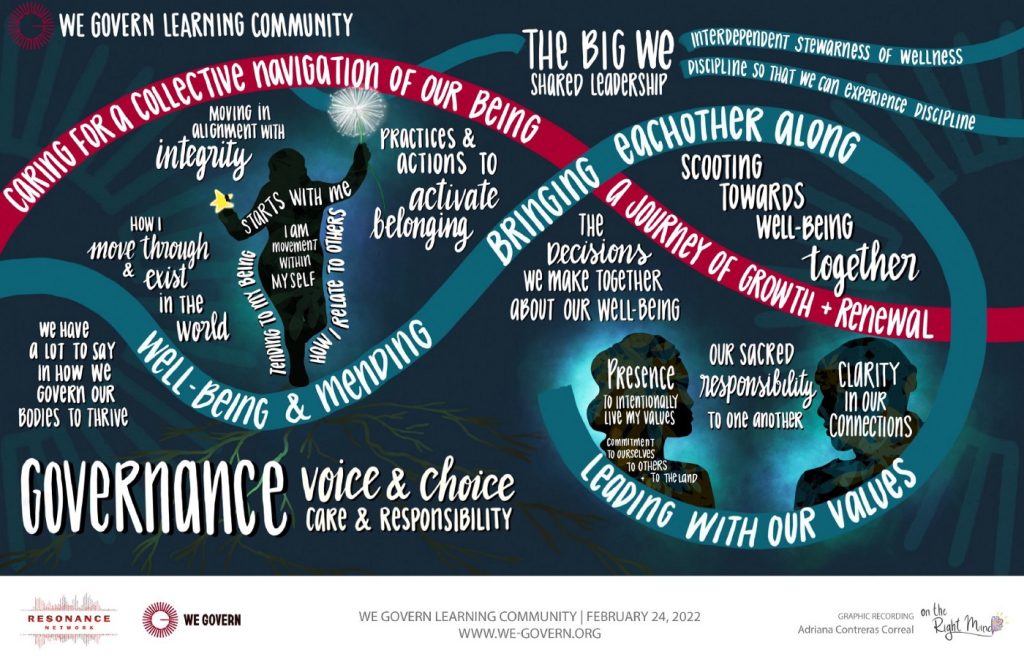
How do we build ways of being that uplift the collective dignity, wholeness, and thriving of one another and the lands we inhabit?
How do we build ways of being where our collective wellbeing is carried by community?
How do we create opportunities to live a happy life? To find joy?
WeGovern Learning Community participants are exploring these questions together–discovering what it takes to live into the WeGovern principles today, in our current realities and communities.
This is collective governance, and it takes practice.
* * *
In phase two of the WeGovern Learning Community, a cohort of new and returning participants came together with a shared commitment to collective governance–in practice, embodiment, and reflection. In their first gathering, cohort members delved into what governance means to them, and how it shows up in their lives. Here are some highlights from that conversation:
“I am a movement within myself.” ~ Monique Tú Nguyen
- I used to think there wasn’t a clear rhythm to the way I make choices–that it just sort of happened as things came up. But when I reflected on it, I realized I have a methodical way of making decisions–with myself, choosing who I spend time with and what I spend time doing, and how I care for myself and use my resources emotionally, physically, spiritually, and financially. That’s governance, and there is power in that clarity.
- At work, we have to be clear about documentation; there are clear pathways and decision making protocols–but how are we clarifying, for ourselves, the pathways toward decision making in our own lives, and in our interpersonal relationships?
We are stepping into the sacred responsibility of tending to our own being-ness
- If we are going to be in relationship and connection with others, we have a responsibility to tend to our own being–our own healing, our own growth. Everything else comes from that place–our practices, our placemaking, how we cultivate belonging, and how we become aware of our needs–and make choices to make sure those needs are met.
- It is the values and choices that I practice every day, in all the unfolding moments. I am choosing wholeness and listening and vulnerability
“When I think about the ways I engage with governance the most, it’s in the relationships I touch every day–my relationship with myself, my relationship with my dog, my relationship with my partner, and in my caregiving relationship with my mom, who has dementia.”
-Alexis Flanagan
There is power in visibilizing our governance practice(s)
- And it’s important to name governance as governance — to visibilize our practice, so we can bring people along
- We are cultivating a sense of responsibility for the way we move through the world. From the moment we get out of bed in the morning, how are we living our values? It’s so easy to let that process be invisible, but so important to bring it to light.
Governance is the gas pedal on the tractor
- If I imagine my life as driving a tractor, what’s accelerating me forward is my own choices. I want to move forward in alignment and with integrity, so that my thoughts and feelings and actions are all in harmony with each other. And I feel right with myself.
- Meanwhile, it’s important to make sure that I am being transparent about my choices in the world–because it’s not enough for me personally to just do the thing. If I don’t voice the value I’m living into, people may see what I’m doing but not understand why. We have a responsibility to bring people along.
“We are scootin’ toward the interdependent stewardship of wellness” -Aaron Spriggs
- Governance is about the big ‘we’. When we understand we as ‘all of us together,’ we consider the moves we make–and the way we impact each other–differently
- Governance is stewardship; it’s caring for the collective navigation of our beingness.
- Our decision making together brings in every part of us, and all of the ecosystems around us into how we’re making every single choice, how we’re moving through our days.
“I am honoring and orienting towards wellness and nourishment–and I practice that in how I speak internally to myself, how I choose to speak in a shared place, how I choose to navigate things like making food in my kitchen–all the choices I make that are interconnected with other people, that impact me and the people around me are all part of that building out into the world we want to live in.”
-Reese Hart
Collective governance is a discipline we choose, so that all people may experience dignity
- We are building strategies to prevent future harm while also taking time to imagine what governance looks like outside of the current structure we live in, that continues to cause harm
- To govern, you need to think about what breaks your heart. And also what you love–and that’s going to help you be who you are in the world. — Rose Elizondo
Governance is a lifelong journey
- Just as in nature’s rhythm of seasons, we are renewing ourselves constantly–our needs are not the same, moment to moment; our bodies are not asking for the same things
- Being able to be open and responsive in the natural ebbs and flows is part of governance practice–it is an ongoing journey of renewal and growth
Governance is the restoration of birthright
- All of us are part of a lineage–we are coming back into ourselves and our humanity, choosing and creating the life we want to live, with the people and beings we want to be with. Almost like we are revisiting our childhoods and getting to raise ourselves–we are deciding who we are, who we want to be, and how we want to relate to (and with) others. How we want to be seen.
- And the capacity for this is something we’re all born with–we don’t have to achieve or acquire; our capacity for governance is already within us. And the more we can see that, the less alone we feel.
“This enormous world I’m part of is always going to be big enough for whatever I evolve into.” -Yesenia Veamatahau
The stance, self care, investment, and spaciousness to be present to what’s happening around us. To step into the choices, in each moment, that enable us to live our values, we need to be present to connections, community, and portals–like the land. Land connects us to today, tomorrow, yesterday. We need to breathe into compassion, boundaries, and love.
We are learning to really be with ourselves–and witnessing the ripple effect that has on others.
Collective governance is rooted in Indigenous peacemaking and restorative justice practices, incorporating laws of nature and spirit.
Forrest Landry says that love is that which enables choice. And perhaps the same is true for governance that Dr. Cornel West says about justice–that it’s what love looks like in public. Governance is ultimately a collective practice–one we are delving into in times of deep uncertainty, isolation, and struggle. We are building when we need to most, the kind of governance we know is possible. Beginning with the choices we make today.
* * *
The reflections in this post were shared during the first gathering of the WeGovern Learning Community Phase 2. Just as the governance we practice, this discussion was a collective endeavor. Deep gratitude to all participants for their presence and contributions: Benjamin Carr, Reese Hart, Monique Tu Ngúyen, Crystal Harris, Ed Heisler, Sarah Curtiss, Leta Harris Neustaedter, Aaron Spriggs, Judith LeBlanc, Lonnie Provost, Brittany Eltringham, Heidi Notario, David Hsu, Adriana Contreras, Estefania Mondragon, Jenni Rangel, Ruby Mendez-Mota, Jovida Ross, Shizue Roche Adachi, Alexis Flanagan, Aparna Shah, Doris Dupuy, Kassamira Carter-Howard, Megan Shimbiro, Yesenia Veamatahau, Karen Tronsgard-Scott, Anne Smith, and LaToria White.
originally published at The Reverb
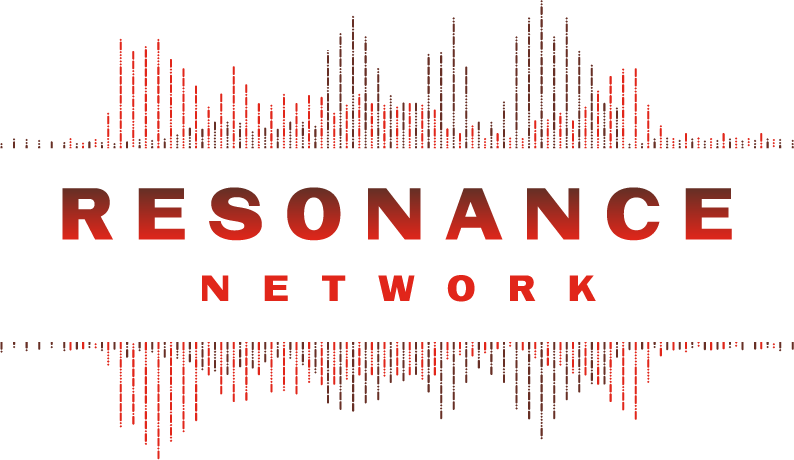
Resonance Network is a national network of people building a world beyond violence.

Network Weaver is dedicated to offering free content to all – in support of equity, justice and transformation for all.
We appreciate your support!
donate in the box above or click here
Failing Productively in Systems Change: Key Mindsets & Practices
August 23, 2022Blog,Systems ChangeSystems Change
This era of disruption requires us to take on deeper systemic challenges. As changemakers, how do we embrace failure as an inevitable part of the work of shifting complex systems? And how do we detangle it from feelings of fear that prevent us from taking the deep risks needed to advance real change?
We've developed tools, resources, and strategies to purposefully assist people in collectively taking on complex, systemic challenges. Our approach focuses on deepening engagement and building momentum to advance strategy and impact.
In this webinar, CoCreative team members Russ, Heather, and Luzette led a co-inquiry to deepen our shared understanding of productive failure, why it is important to systems change and the key mindsets that need to be challenged to do so.
We're deeply grateful to our friends at Tamarack Institute for hosting this important conversation.
Speakers: Russ Gaskin, Heather Equinoss, Luzette Jaimes and Sonja Miokovic
Download the slide deck we used in this session. We also invite you to explore these links to learn more:
- Read Lisa Attygalle’s paper Creating a Culture of Engagement which explores the fear we might feel when deeply engaging citizens in community change work
- Check out Fail Forward to develop skills in learning from fear of failure
- And get our two-pager on Embracing Failure in Systems Change


Download the "Embracing Failure in Systems Change" resource.
Included:
- Failing Productively in Systems Change webinar
- Failing Productively in Systems Change slide-deck
- Embracing Failure in Systems Change thinking tool pdf
Download HERE
originally published at wearecocreative.com
featured image found HERE

Network Weaver is dedicated to offering free content to all – in support of equity, justice and transformation for all.
We appreciate your support!
donate in the box above or click here
People Stitching Earth | Oppression, Healing, Liberation, and Navigating the Terrain In Between
August 9, 2022Uncategorized,The Big Picture,Blog,Transformation,Equity
When we made it back home, back over those curved roads
that wind through the city of peace, we stopped at the
doorway of dusk as it opened to our homelands.
We gave thanks for the story, for all parts of the story
because it was by the light of those challenges we knew
ourselves—
We asked for forgiveness.
We laid down our burdens next to each other.Joy Harjo, “Conflict Resolution for Holy Beings,” An American Sunrise
Origin Story
The first beings were not humans or animals or even plants. The first beings were river, rock, lava, and sky. Later came plants, then animals, then last of all, came two-leggeds who became easily lost and had to learn again and again in order to remember their way. This is a story of that journey—one that started in harmony and abundance and has been transformed by settler colonialism, enslavement, and their aftermath: patriarchy, extractive capitalism, collective violence against aki, the earth, and all her inhabitants. The resulting interlocking systems of oppression choke lungs, poison waters, exterminate life, and obscure the sun.
This is not a story about re-making a fictional ideal past. Harmony, in narrative or music does not preclude disagreement or conflict. This is a story about some of the ways we can return to who we truly are and how we are meant to be in right relation to each other and all beings, mortal and immortal, sentient, interdependent, free.
The Journey
During this time of the great sickness—a time of tyranny, violence and greed—people have been harmed deeply by the practices of oppression: disconnection from source (a higher power and understanding of the world as greater than ourselves such as through spiritual, natural, cultural, ancestral, and/or creative practice); dissociation from our physical bodies; distancing from our emotions; and distortion of our stories.1 Some days the effects are overwhelming; the sickness is life threatening. Some days—with rest and soup, with love and community care—there are moments of shared understanding, connection, and transformational shifts in understanding and behavior.
Beyond rest and community care, what makes these moments possible, and the potential for such moments to multiply exponentially, is not one but many things, things that operate across the dimensions of personal, interpersonal, organizational/institutional, and societal/social systems.2 For those of us working as racial equity change makers—whether as internal or external coaches and consultants, including those who work in intersectional roles as healers, artists, and liberation practitioners—there is a familiar route that embraces organic twists and turns and yields movement in the right direction.
The current emphasis in our field on trainings, assessments, and curriculum—which are all good and necessary components of intersectional racial equity and can be catalytic, if used in their full potentiality—are too often leading people into thorny thickets and near cliff edges where they give up, abandoning the journey, or worse, go back from whence they came. This is not to say that these entry points are not useful ways of understanding our contexts and our own behavior in them, but they are insufficient in supporting the integration and embodiment of new ways of being, understanding, and engaging with the world. When we practice the elements of a liberating ecosystem, we enable the seeds of training and assessments to meet the nutrients and environments needed for them to take root and grow.
There are many ways to traverse the multi-faceted and challenging terrain created by the delusion of white supremacy, but overall the best possible paths are moving in the direction of intersectional racial equity that engages people and systems in practices of healing and liberation. We liken this process to a journey in the woods. There are a number of recognizable clearings or places that support visibility and understanding. And it is in these clearings that clarity, commitment, and learning is possible.
Unlike rational and determinist approaches to intersectional racial equity—ones that center assessment tools, analytical instruments, and pre-defined linear processes—we have found that these pathways are open-ended enough to support opportunities to digest learning and engage in intentional action, through which we can engage in cycles of feedback and reflection to support unlearning white supremacy and re-membering our practices of interdependence, mutuality, and stewardship.
Complexity and Justice-Oriented Change
Advancing racial equity is complex systems change, and while working in complexity there are very, very few, if ever, “best practices”. There are more good practices and most situations require emergent and adaptive practices.
Some characteristics of complexity—as outlined by David Snowden and Mary Boone3—are contexts where:
- “Large numbers of interacting elements are involved.
- The interactions are nonlinear, and minor changes can produce disproportionately major consequences.
- The system is dynamic, the whole is greater than the sum of its parts, and solutions can’t be imposed; rather, they arise from the circumstances. This is frequently referred to as emergence.
- The system has a history, and the past is integrated with the present; the elements evolve with one another and with the environment; and evolution is irreversible.
- Though a complex system may, in retrospect, appear to be ordered and predictable [eg. history], hindsight does not lead to foresight because the external conditions and systems constantly change.
- Unlike in ordered systems (where the system constrains the agents), or chaotic systems (where there are no constraints), in a complex system the agents and the system constrain one another, especially over time. This means that we cannot forecast or predict what will happen.”
This articulation of the characteristics of complex systems is helpful. And too, it is important to recognize that indigenous cosmologies and teachings—particularly those from the Americas and Africa—situate a complex world in which binaries and closed systems do not exist. The cynefin model, the sense-making tool that visually represents Snowden’s complexity theory, is itself from native Welsh principles and language. The word cynefin means roughly “place of our multiple belongings.”
The metaphor of a path or route, one that is organic and emergent, has the flexibility to hold the complex nature of the change we are seeking toward equity and liberation. When traveled with practices of power and leadership sharing, committed attention to innerwork, and embracing multiple ways of knowing, we live in iterations of change that both begin to prefigure the world we want and create the necessary conditions for advancing liberation in the world we are currently living in.
Charting the Terrain
Clearing One – A Reflective Pool
There are many ways to gain an understanding of where an organization and team is in terms of living into intersectional racial equity. Many equity practitioners use written or online assessments. Others hold interviews or focus groups. Some establish storytelling circles or work together to develop murals or other forms of visual narrative. Some use a mix of quantitative and qualitative (including artistic) approaches. Regardless of the approach and the associated tools and practices, the purpose is to get a complex, aggregate picture of what is, a picture of the terrain that is so much more than an organizational map. It is a layering of perspectives that helps the organization and its partners gain some sense of the contexts and conditions comprising the culture and lived experiences of people in the organization or network.
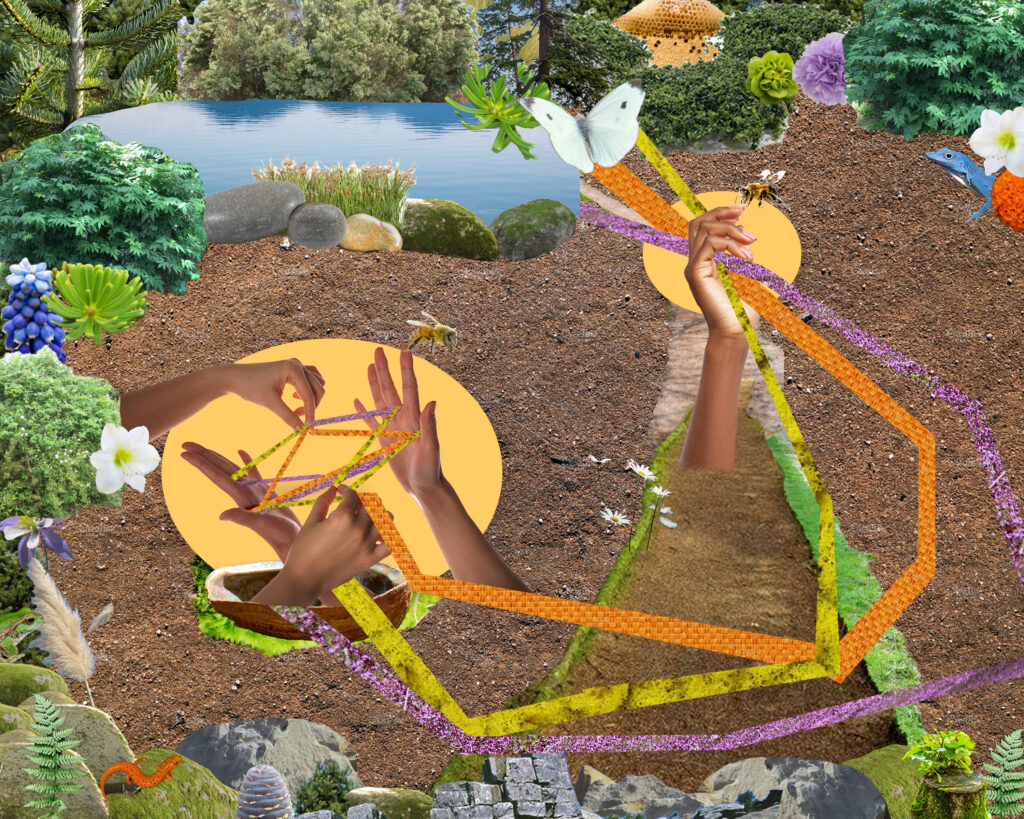
Clearing Two – A Rocky Outcrop
Once a picture of the terrain is made visible, another clearing presents itself. This rocky outcrop is a place where everyone is able to see the full and discrete snapshots of the organization and participate in a shared meaning-making process about what these snapshots might say about the team and the organization. However, collective sense-making requires some shared understanding of the current and historical structures, strategies, and belief systems that benefit some people at the expense of others. This is a juncture in the journey where indepth, whole-system conversations are crucial to restore the very real stories of settler colonialism, enslavement, genocide, wage theft, and extractive capitalism that have largely been disappeared from and or greatly distorted in our education systems. Building on these understandings, teams can also develop a shared understanding of how the continuing impacts of these legacies and other ongoing systems of oppression and inequity interact to perpetuate the manifestations of inequity in our lives and organizations. This discordant recognition is fundamental to the path.
Disagreements about what it all means and why—this generative tension—is what pushes teams and organizations toward deeper understanding. How is it that our shared language is so full of references to militaristic strategies that supported western expansion, manifest destiny and Native genocide? And how is it that the end of the enslavement of African and then African American people has done little to shift the fundamental economic, health, educational—insert just about anything here—disparities between whites and Blacks? The actual questions that teams grapple with have a lot to do with who’s on the team, their lived, racialized experiences, and the depth of their power analysis.
What matters is that teams are moving towards a shared understanding that interrupting current, intersectional racial inequities isn’t possible without having a depth of knowledge about historical inequities and the practices and systems that support their perpetuation. In this rocky outcrop, teams will often read, attend workshops and trainings, participate in caucus or affinity groups to support interrupting internalized oppression and internalized privilege. This learning journey is essential and what it entails depends on who is on the journey together. Among people of similar racialized identities it may mean grappling with global colonialism and the ways that it has impacted different peoples and different families’ histories. Healing often becomes a central focus, calling in ritual and ceremony to support the processing and release of past and present trauma.
This can be a difficult time in an organization. The fallacies that held the team together have been stripped away. But nothing new is yet in its place. It is a time for care and humility. It is a time to support the ingestion and digestion of the pervasive, corrosive presence of racial equity, making space for the restoration of our collective humanity within and across all racialized groups. It is a time for reconnecting to source, reengaging our bodies, reclaiming our emotions, and reweaving the fullness of our stories. This can mean a necessary, intentional, and sometimes scary unmooring in the day-to-day. And too, it is an opportunity for people to show up differently and build the muscle and heart necessary to get to the next evolution in the process. It requires cultivation of courage, humility, and room for risk-taking, as well as tools supporting accountability and collective tending to harm. This place demands space and time. This place requires more of us than we have sometimes been able to give. There is a necessary clarity that comes from such disruptions. As Norma Wong says, “transformation requires agency.” Some people may, in fact, choose not to move with their team or organization. And that is part of the journey too.
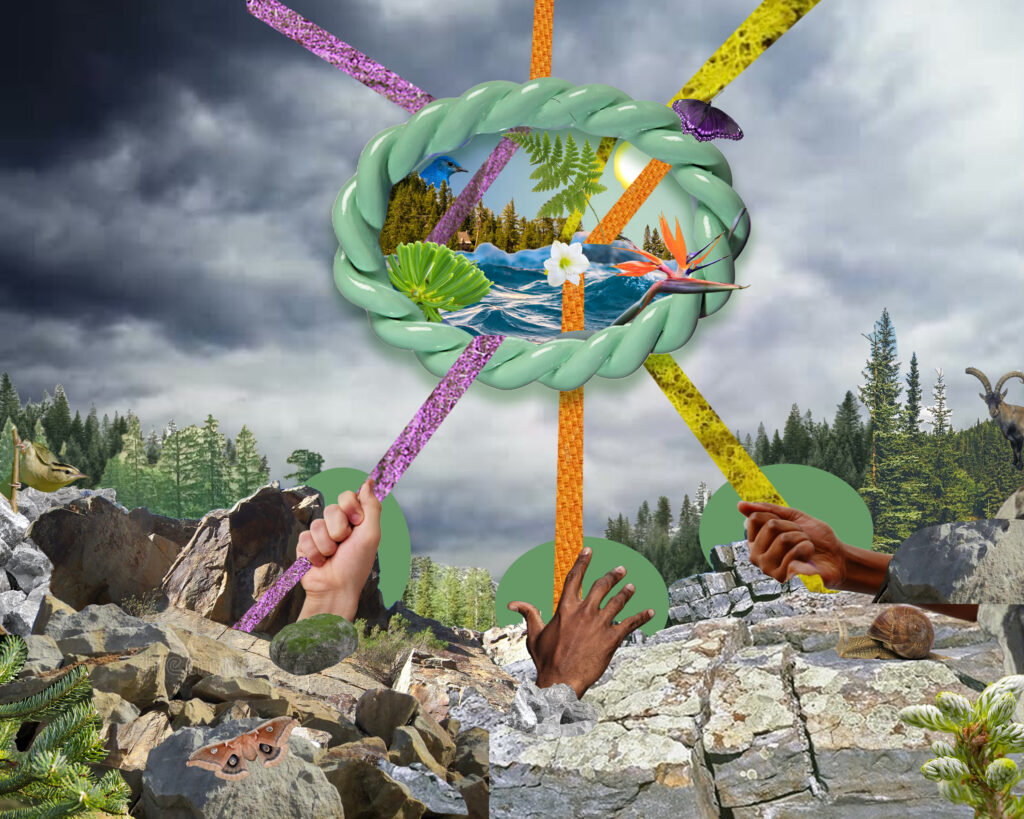
Clearing Three – A Sudden Vista
Through a commitment to authenticity and rigor—and doing the necessary work of deepening our understandings of historical and current conditions that affect our individual and collective experiences—we come to a sudden vista, an opening in our capacity to see a different future. A future where we all have the ability to thrive.
It is here that a visioning process can truly expand our shared picture of a liberated and liberatory future. From this vision, we can outline the values and principles that guide how we be with each other in liberating ways and define some key short term and long term transformation efforts, arriving together at those aspects of the organization that, if transformed, would enable people to experience an actual taste of equity in the immediate term while working on efforts to change the organization overall in the long term.
What we are creating is not new, yet it can be wholly unfamiliar. However, we have everything we need to make this visionary future possible. It simply requires courage, imagination, and the willingness to move as if we have one foot firmly on land and the other submerged in the tumultuous and profuse waters of the sea.4

Clearing Four – A River Flows
Once the vision, values, hopes, and dreams, the team can start developing some focused priorities and goals and the implementation effort begins to flow. But equity transformations are always a mix of inspirational visions and more tangible decisions and practices. Weaving across the two is the art of advancing complex systems change in which we are developing experiments across the organization’s functions and programs. Or it might be one or two short and long term efforts from which the team and organization is continuing to learn and to refine in ongoing cycles of reflection and growth. What matters is that the effort is continuous and fluid, and that the fluidity takes into account boulders, logs, beavers, otters as obstructions are also natural innovations to the existing ecosystems. Throughout this process, the team is meeting current capacity and emerging circumstances in ways in which both the vision of equity and the realization of equity are contiguous tributaries in the river’s powerful flow.
Context Affects the Terrain
While we are all swimming in the torrential waters of racial inequity and other intersectional forms of oppression, we are affected differently. Some are buoyed by floatation devices. Some are carried along by speedboats. Others are fighting to keep their airways above the surface of the water. The same is true for leaders, teams, organizations, and networks.
To make sense of these differing contexts—at all of the levels of racial oppression including internalized, interpersonal, institutional and systemic—we are going to describe differing approaches based on where different types of individuals, teams, organizations and networks live along a white dominant-to-liberatory spectrum: 1) White Supremacy Culture, 2) Multicultural Stance, and 3) Pro Black and Indigenous.
While such classification efforts are inherently overly simplistic, there is sufficient value in outlining different approaches based on these categories, contexts and associated conditions.
1) White Supremacy Culture (aka “The Delusion of White Supremacy & the Culture that Upholds It”)
In an organizational culture of white supremacy, organizations are habituated to working in ways that uphold the delusion of white supremacy whether intentionally or not. These cultural practices have been laid out in the work of Tema Okun and continue to be deepened by other racial equity practitioners. Initially identified as thirteen habits, the framework has evolved to include nuanced descriptions of behaviors that reify inequity, transactional relationships, and oppressive power structures. These cultural habits are exemplified by valuing perfectionism, individualism, fear, right to comfort, competition, urgency—and drive most organizational decisions and overall organizational culture in white dominant organizations.
These organizations are most often:
- White led and/or have a history of white leadership and predominately white staff (not always white-led; may include people of multiple races at various levels of the system but not in large numbers in leadership and if so, not for very long);
- Equity focus is on diversity, equity & inclusion (DEI), with an emphasis on diversity; and
- People exhibit and experience disconnection from source (a higher power and understanding of the world as greater than ourselves such as through spiritual, natural, cultural, ancestral, and/or creative practice); dissociation from their bodies; distancing from their emotions; and distortion of their stories.5
- There are also historically people of color-led organizations that operate predominantly in this fashion; most often they are in areas of work that are deeply steeped in white supremacy culture such as some legal, policy, research, philanthropic and merit-based youth-serving organizations.
Deep equity work in this context focuses on making visible the ways in which white supremacist ways of being and doing are operating as an uninterrogated norm which serves to reify white leadership and the myth of white supremacy and/or undermine the wisdom, gifts, and value of BIPOC people. Organizations in this category are often set up to support the learning, comfort, safety, and power of those in leadership and particularly white leaders. Change processes can unintentionally replicate these patterns at the expense of native people and people of color.
Racial equity change makers will often focus on cultivating equity-based awareness and understanding with white leaders in the system to ready them and thus the organization for deeper equity work. This aspect of the change effort can be very depleting for staff of color in every level of positional power as well as for all staff with less positional power within the system. The tax of this effort is in direct relationship to white leaders willingness, courage and capacity to develop a baseline understanding of structural racism and intersectional elements of oppression. If leaders are resistant to deepening their awareness and/or actively suppressed learning then little progress can be made without developing alternate leadership structures to support the organization in its evolution.
2) Multicultural Stance
In multiracial/multicultural contexts, organizations tend to exhibit characteristics of both white supremacy culture and what Okun would call “antidotes.” In this instance, an organization might be more recently led by people of color and/or have significant numbers of people of color throughout the organization including on the leadership team. In this context, the racial equity and liberation (REAL) work is more often focused on equity, which is made possible by the fact that people in the organization have a solid understanding of structural racism and intersectional elements of oppression.
The organizations are often actively seeking to disrupt the habits of white supremacy culture and people have more shared practice of expressing the harm caused both within and beyond the organization. However, having not yet fully developed the muscles of an equity-based organizational culture, the organization and its leaders will often default to white supremacist ways of working in urgency or in high-stakes decision-making, for example relying on positional power instead of embracing wisdom, experience, and skill-sets from multiple people in the system and therefore have trouble implementing equity-based systems change internally.
While all racial equity work needs to center healing, the work in multiracial/multicultural contexts often necessitates a focus on healing at intra-personal, interpersonal, and organizational levels simultaneously in order to create the needed conditions for equity-based systems change. REAL change in this context is about unlearning our beliefs and related actions as a result of internalized oppression and our complicity with white supremacy as people of color. For white people in all contexts, the work is about interrogating internalized white supremacy so that long standing ways of maintaining privilege are dislodged, making space for new ways of living and being that don’t center whiteness and the power it exerts in explicit and implicit ways. Specifically, in multiracial/multicultural contexts, white people tend to have more systems based understanding but are often still struggling to recognize that impact is not exclusively the result of individual intention. The arc of learning in this context is to develop a more complex understanding of the relationship between “it’s all my fault” and “it’s all the systems fault” in order to recognize that—because of race, power and privilege—they are both simultaneously true. In order to live into this complexity, it calls on all of us to begin to embody new ways of being.
3) Pro Black and Indigenous
In contexts where Black and Indigenous people, wisdom, and cultures are centered, organizations are led and predominately composed of multi-identitied or single-race identified Black, Indigenous and people of color (BIPOC) that have done work to address anti-blackness and anti-indigenity as a collective. The organizational vision and mission are rooted in social justice and liberation. People exhibit greater connection to source. They are in touch with the wisdom of their bodies and their emotions and are resourced by and able to be in whole and simultaneous stories. The focus of the work is beyond equity toward liberation and sovereignty.
In this context, healing work (individual and collective) is both foundational and ongoing as the organizational culture exists in a wider, toxic, and systemically oppressive society. In addition to engaging in healing and liberating practices, liberation requires continuing to address inequities; building our collective muscles for engaging in generative conflict, giving and receiving feedback, and holding each other in loving accountability; in addition to developing and evolving more equitable power structures and practices. It takes collective care and courage to embody and enact the systems, structures, ways of being that emulate the world we want.
There is great potency in this context as it creates the ability to experience some of the new world that we want while still living in the hollowed shell of a decaying, oppressive society. And too, the dissonance between two worlds requires rigorous attention and care on the part of the team as well as humor and love. It is here that we begin to crack open the old and spill toward the new.
“When I dare to be powerful to use my strength in the service of my vision then it becomes less and less important whether I am afraid.”
Audre Lorde
Approaches and Practices
So much of the focus of racial equity-based system change is on tools and frameworks. This tendency reflects the white dominant habit of overvaluing numerical data and the written word. While surveys, assessments, numerical analysis and the frameworks that outline how to apply them are valuable, they will not, in and of themselves, lead to intersectional racial equity let alone liberation. What will lead to equity is changing both what we do and how we be together. Assessing where an organization in terms of racial equity is the first tiny step and can be harmful if other steps don’t follow.
The Elements of Transformation
We have found that the most essential approaches to advancing intersectional race-equity systems change are those rooted in the elements of transformation toward liberation acting as the five fingers of one hand:
- Deep Equity & Liberation
- Complex Systems Change
- Leadership & Power Sharing
- Innerwork
- Multiple Ways of Knowing
What we are up to in our justice work boils down to equity and liberation whether we are talking about environmental justice, gender justice, educational access, or any of the social and economic harms resulting from the legacies of slavery and colonialism in the U.S. Advancing this kind of change IS complex systems change. In order to lead complex systems change, we must expand our understanding and expressions of leadership to embrace power-sharing and collaborative action. Leading together in this way requires innerwork, so we can be present for and resilient with change, and expanding how we know and what is considered wisdom in order to dislodge the dominance of white, western culture. This is individual and collective work. We have written extensively about this. For a deep dive, please read our blog on Practicing the Elements of a Liberating Ecosystem and earlier articles published in the Nonprofit Quarterly (NPQ): Pursuing Deep Equity, Cultivating Leaderful Ecosystems, Embedding Multiple Ways of Knowing, Influencing Complex Systems Change, and Centering Inner Work.
Equity-Focused Teams
In organizations and networks, particularly majority white and/or white dominant culture and multiracial/multicultural ones, any equity focused effort needs to be supported by an internal equity team—one that draws on the organizational diversity in terms of roles, experiences, expertise and identities. In order to advance equity, there needs to be an aligned and skilled group to shepherd change that has the credibility to champion emerging changes. Some of the qualities of equity team include:
- people committed to equity;
- people who have some lived experience of the effects of intersectional and systemic racism;
- people committed to the mission and vision of the organization;
- people who have either have the decision-making power and/or influence ability to advance change;
- people willing and able to commit to the time and effort equity efforts will require (note: the organization needs to be sure to make this focus and attention possible, e.g. this can not be an additional item added to people’s work expectations without removing other things);
- people able to hold confidentiality (share learning not other people’s information) and
- people able to engage in difficult conversations and see the potency of generative conflict
In contexts where Black and Indigenous people, wisdom, cultures are centered and organizations are rooted in a liberatory stance, the commitment to and experience with advancing racial equity exist across the organization and power is shared more broadly. In this context an equity team may or may not be necessary. Rather equity transformation efforts can be held in existing structures and team compositions. Racial equity coaching and consulting support in this context is even less about the doing and more about the being, tending to the complexities of transformational change in interracial teams and organizations while existing in a violent, toxic, and oppressive society.
Internal Skill Development
In all contexts, advancing intersectional racial equity requires that we develop and/or deepen our skills in being deeply present, loving, and human with one another. It means we need to lift one another out of survival states—where all energy is necessarily focused on getting our basic needs met—and cultivate the ability to be present to past and current suffering, giving voice to what has been unspeakable, entering conversations from a place of deep curiosity, and being willing to engage with difference—different perspectives, experiences, ways of making sense of the world. We do this because the change we seek actually requires all of us. It will not happen because of a few exceptional leaders. American exceptionalism is actually part of the knot that binds us in deeply inequitable ways.
Depending on their context, as outlined in the earlier section, and the existing experiences and expertise of different teams, new skills and/or muscles (as the nascent skill may actually exist it is just underutilized) will need to be developed. That said, there are some foundational skills and/or muscles needed to advance racial equity and the interdependent elements of a liberating ecosystem. They are:
- the ability to engage in generative conflict—actually embracing difference and the ways it can lead to conflict as a source of creativity and change;
- providing real-time affirmative and critical feedback on how we are impacting one another so that we can learn and grow;
- recognizing that organizations, leaders, teams and networks need supportive structures and practices to survive in all times and most certainly to thrive during equity change efforts so be sure to get your foundation set before building something new; and
- holding loving accountability with one another – “the practice of loving accountability consists of honest and authentic communication, vulnerability, and the willingness to hold each other accountable for our impacts—beyond just words. If a collective value or guiding principle is repeatedly violated by someone, and no amount of communication and support can interrupt it, then loving accountability instructs us in employing meaningful consequences—not as punishment but rather as ensuring the health of the collective through meaningful boundaries.”6
Depth of Engagement
Any authentic, intentional and focused effort to advance intersectional racial equity has the potential to lead to transformational change. Such change could be evidenced by significantly increased understanding of systemic racism and the ways internalized supremacy is playing out in a white leader’s priorities and decision-making. Transformational change could look like a BIPOC team’s success in deepening its generative conflict muscles and being able to really unpack unspoken assumptions and internalized oppression in order to create new ways of advancing its vision and mission that supports the team in being and acting from liberation.
There is no “right approach” to support equity-based systems change. Rather there are necessary nutrients to ensure such an effort will seed, root and flourish. These nutrients are similar whether we are providing one on one coaching, team facilitation and support, or an organization-wide equity change effort. While all plants require differing amounts of sun, water, warmth, all require the fundamental macronutrients of carbon, hydrogen, nitrogen, oxygen, phosphorus, and potassium.
- Clear sense of purpose of and strong commitment to equity effort and its alignment with vision, mission and strategies;
- Willingness to let go of existing practices, structures and approaches and experiment with new ways of being and doing in order to change, learn and grow;
- A recognition that the wound of intersectional racism is still festering and any effort to heal and transform it brings with it the possibility of new injuries, discomfort, alternating periods of remission and acute illness and requires an enduring commitment to stay the course.
As individuals and teams evolve their application and wisdom of intersectional race equity and liberation, there are some frequent markers of understanding that mark this transformation. We draw these from some of the components of Jay McTighe’s and Grant Wiggins’ Understanding by Design framework.7
Perspective
Regardless of the context they are in, individuals and teams are able to articulate and apply the importance of race equity work in their day to day intentions, priorities, and decision making.
Empathy
In all contexts, individuals and teams are deepening their capacity to listen and see and feel things from different points of view and honor the lived experiences and perspectives of one another all while moving toward equity and liberation.
Self and Group Knowledge
People demonstrate a recognition and ability to grapple with their biases, triggers, and self perceptions in order to deepen their own and the team’s capacity for equity-based systems change.
These markers reflect some of those outlined in the modes of the Liberatory Design8 cycle, although those modes are stages of a process and what is being outlined here are markers of understanding, how you might know things are shifting in meaningful ways. Nonetheless, Liberatory Design provides an integrative approach—weaving across design thinking, complex systems change, and racial equity— and serves as another way of thinking about cognitive and behavioral approaches to change rooted in experimentation.
Moving through an Unfamiliar Present Makes Possible an Equitable and Liberatory Future
To live as if. It is not easy. Inner work and our cultivation of the capacity to be present, to see what is, to be part of the rapid, long and slow process of evolution, revolution, to breathe through it all is so necessary. Throughout this work we will dance and sometimes stumble and fall. Our cores must be both strong and flexible; and it takes all of us to reach our appendages toward each other, to lift one another up.
The world depends on us. Race equity and liberation (REAL) work gets us closer to holding each other in a field of love, from which place so many of the ills of the world are healed. As Paula Gunn Allen writes in Grandmother’s of the Light:
“It is said at the time of the beginning, the Goddess will return in the fullness of her being. It is said that the Mother of All and Everything, the Grandmother of the Sun and the Dawn, will return to her children and with her will come harmony, peace and the healing of the world. It is said the time is coming. Soon.”
We are here to turn the wheel toward a new beginning. One in which all of her children are free.
Collage credit: Naima Yael Tokunow
Originally published at Change Elemental
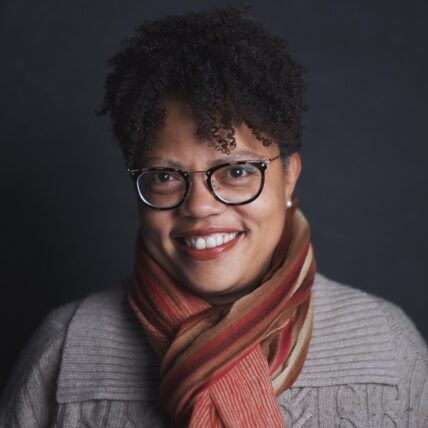
Elissa Sloan Perry (any pronouns used with respect) is of African and Mississippi Choctaw descent, hails from Missouri, and is a 30-year resident of California. She supports people with a vision for an interdependently thriving people and planet to be better in what they do. Elissa joined Change Elemental in 2013 as the Program Catalyst for the Network Leadership Innovation Lab, became CoDirector in 2015, and transitioned to the Leadership Hub in 2021.
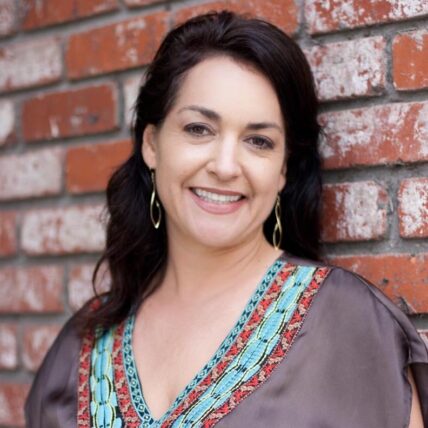
Aja Couchois Duncan (she/her/we) is a San Francisco Bay Area-based leadership coach, organizational capacity builder, and learning and strategy consultant of Ojibwe, French, and Scottish descent. A Senior Consultant with Change Elemental, Aja has worked for 20 years in the areas of leadership, equity, and learning.
1 This framework for understanding the ways oppression separates us comes from the profound and inspiring work of Monica Dennis.
2From the work of Camara Phyllis Jones, “The American Journal of Public Health,” Levels of Racism: A Theoretic Framework and a Gardener’s Tale 90, no. 8 (August 2000): pp. 1212-1215, https://doi.org/10.2105/ajph.35.12.1319, and john a. powell, “Structural Racism: Building on the Insights of John Calmore,” North Carolina Law Review 86 (2007): pp. 791-816.j
3David J. Snowden and Mary E. Boone, “A Leader’s Framework for Decision Making,” Harvard Business Review, November 2007, pp. 1-9, https://doi.org/https://www.systemswisdom.com/sites/default/files/Snowdon-and-Boone-A-Leader’s-Framework-for-Decision-Making_0.pdf.
4“one foot in the water / one foot in the sand is where I hear the best.” Alexis Pauline Gumbs, Undrowned: Black Feminist Lessons from Marine Mammals (Chico, CA: AK Press, 2020).
5 This framework for understanding the ways oppression separates us comes from the profound and inspiring work of Monica Dennis.
6Aja Couchois Duncan and Kad Smith, “The Liberatory World We Want to Create: Loving Accountability and the Limitations of Cancel Culture,” NonProfit Quarterly, May 19, 2022, https://doi.org/https://nonprofitquarterly.org/the-liberatory-world-we-want-to-create-loving-accountability-and-the-limitations-of-cancel-culture/?utm_content=208660872&utm_medium=social&utm_source=linkedin&hss_channel=lcp-542508.
7David J. Snowden and Mary E. Boone, “A Leader’s Framework for Decision Making,” Harvard Business Review, November 2007, pp. 1-9, https://doi.org/https://www.systemswisdom.com/sites/default/files/Snowdon-and-Boone-A-Leader’s-Framework-for-Decision-Making_0.pdf.
8“Introduction to Liberatory Design,” National Equity Project, https://www.nationalequityproject.org/frameworks/liberatory-design.

Network Weaver is dedicated to offering free content to all – in support of equity, justice and transformation for all.
We appreciate your support!
donate in the box above or click here
What is Network Weaving? - Q & A with June Holley
August 8, 2022Network Weaving,network weavingBlog,Systems Change,Self Organizing
June Holley is a Wellbeing Blueprint signer who has been weaving networks, helping others weave networks and writing about networks for over 40 years. We recently sat down with June to define network weaving and help us understand how it can be a game changer in building our collective capacity to bring about social change.
Q: What is network weaving?
A: Network weaving is something that we all do. It’s paying attention to the relationships around you and noticing who’s missing, who’s not being listened to, and helping create healthier, deeper relationships. You do this by bringing new people in, by connecting people within your existing networks, and helping them get to know each other so they can work together.
Q: What is the difference between networking and network weaving?
A: When people think of networking, they think of passing out business cards to people at a conference and selling themselves. So networking is all about yourself. But when you move to network weaving, it’s about the community. It’s about the people around you and helping them build a network that can be capable of support and action. It’s a pretty different thing.
Q: What does network weaving have to do with building a country where everyone has a fair shot at wellbeing?
A: The concept of wellbeing is really complex and there are a lot of pieces to it. It might be about health access, it might be about creating a safe community. But before people can begin to work and co-create these kinds of things in their community, they need to know each other deeply. They need to be able to trust each other so they can work together. Working on the network and relationships is about creating the foundation, the fertile ground, on which aspects of wellbeing can emerge. So the more time you invest in building relationships, the easier it will be to work together on wellbeing.
Q: What’s one thing someone can do to start network weaving?
A: One of my favorites that you can do at every meeting you have is called speed networking. It’s a way to help people either get to know people that don’t know each other, or help to deepen relationships.
It goes like this: you ask people to stand up and find somebody they don’t know or don’t know well. And then you give them a juicy question like, “What’s keeping you up at night?” Or “What’s something about yourself that not many people know?” And you give them about five minutes to talk back and forth. Then you have the group come back together to debrief. You can ask them what made their partner a good listener. People will list things like eye contact, nodding, asking good questions, feeling really heard, etc.
Now that the group has established some guidelines for good listening, you ask everyone to pay attention to their listening skills in the second round. Then you give them another question, they go off and talk to somebody different this time. After the group reconvenes, everyone can share out the difference they noticed during this round. Often people will say they noticed themselves being a better listener and getting more out of the conversation.
There are lots of very easy, small things that you can do to interact with people in new ways that are much healthier and lead to much more effective and interesting actions.
Learn More
- For tools, resources and events, visit dev.networkweaver.com.
- For an introduction to June’s thinking around network weaving, check out her collection of posts on Medium.
- To ask questions and connect with a community, join the Network Weaving Facebook group.
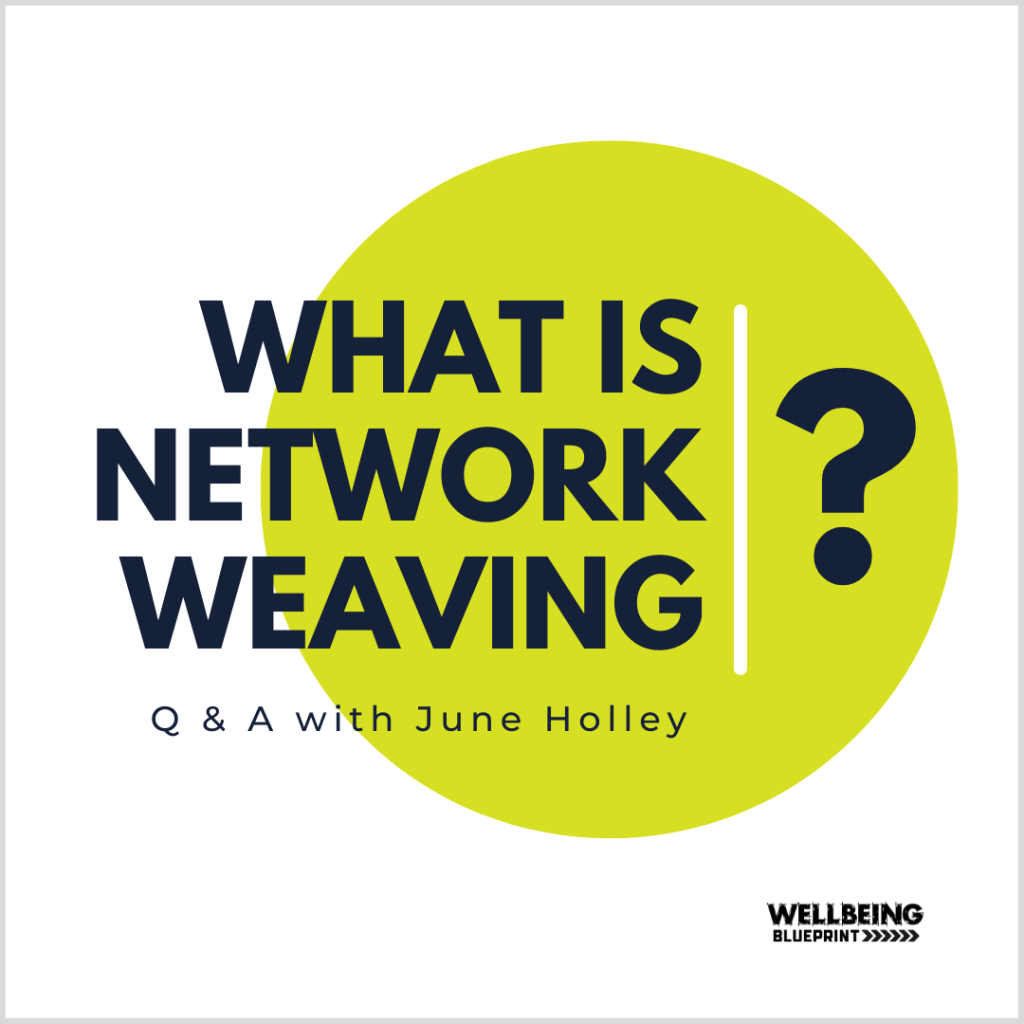
You can also download a pdf with a link to this interview to save to your personal library by visiting the Network Weaver Resource Page.
Originally published at Wellbeing Blueprint

Network Weaver is dedicated to offering free content to all – in support of equity, justice and transformation for all.
We appreciate your support!
donate in the box above or click here
Reclaiming Care Beyond Roe v. Wade
July 28, 2022Self-Organizing,Blog,Self Care,Liberating StructuesSelf Organizing,Community,Social Justice
When the state cannot guarantee our safety, we turn to community as our ancestors did
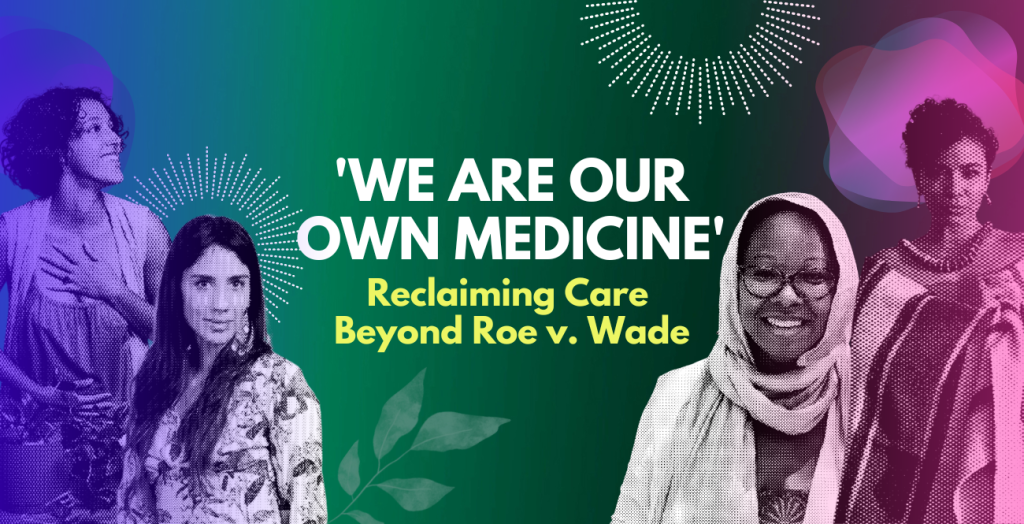
On June 24, Roe v. Wade was overturned by the Supreme Court after nearly 50 years as precedent.
Weeks before, in response to the leaked decision, Resonance Network hosted ‘We Are Our Own Medicine,’ a gathering grounded in community, storytelling, and ancestral wisdom. Alongside Black and Indigenous healers of various traditions, we came together knowing what our ancestors have known for generations: the state cannot guarantee our safety — it never has.
In the US, incarcerated, disabled, undocumented, poor, queer and trans folks, and survivors have been denied reproductive rights, bodily autonomy, and care for decades. Because this violence lives in our history — and shared reality — we gathered to learn from and share stories from ancestors — past and present — who’ve lived this experience.
In short, when the state cannot guarantee our safety, we turn to community as our ancestors did.
Below is a constellation of wisdom from ‘We Are Our Own Medicine.’
* * *
Deoné Newell — Women’s Empowerment Coach
Deoné is a Navajo/Black entrepreneur, Breathwork Facilitator and Women’s Life Coach. As a woman who hails from the Navajo Reservation (Window Rock, AZ), and has seen the effects of systemic oppression and generational trauma firsthand, Deoné has dedicated herself to making ancestral healing, and its forgotten wisdom accessible to as many BIPOC women as possible.
Karen Culpepper—Clinical Herbalist/Educator
Karen has been a practitioner and bodyworker for over 14 years, focusing her work on intergenerational trauma and its impact on physiology and womb restoration. Her study of cotton root bark as an abortifacient and source of sovereignty for descendants of captured Africans in the US and beyond offers insight into the role of plant spirit healing in the context of political changes.
Qiddist Ashé—Founder, The Womb Room
Qiddist is a medicine woman and female health educator. Informed by her maternal lineage of Ethiopian midwives and her own work in authentic midwifery, functional health, herbalism, somatics, and spiritual sovereignty, Qiddist merges the science and the spirit of female health, orienting to all the ways we can reclaim agency and responsibility for our bodies and our lives.
Camila Barrera Salcedo—Doula/Midwife/Educator
Camila is a mother of 3, doula, midwife, sexuality therapist, and holotropic breathing and fertility therapist. She delves into the unconscious via the physical body to identify blocks that disrupt the evolution and transformation of individuals. She develops workshops to re-establish the feminine consciousness through acceptance and knowledge about the body and its processes.
originally published at The Reverb

Resonance Network is a national network of people building a world beyond violence.

Network Weaver is dedicated to offering free content to all – in support of equity, justice and transformation for all.
We appreciate your support!
donate in the box above or click here
Weaving Networked Action for Systemic Change - A Practical Guide
July 25, 2022Blog,Systems Change
This short guide synthesizes the practice of weaving for leaders, social entrepreneurs, and facilitators looking for holistic ways to co-create systemic change.
Written by Namrata Arora & Adrian Röbke as members of The Weaving Lab.
Introduction: Systemic Change Towards a Thriving World
We find ourselves in intensifying personal, societal and ecological turbulence. Our societies are transitioning and natural ecosystems are eroding at an alarming rate. We are at a collective choice point: How we act right now will determine if the planet remains livable for humanity and many other species [1].
On the bright side, many are contributing to societies that honor the fundamental interrelation of people and the planet. Now, there is a great need to share power and re-imagine our systems together. We are called to learn our way into a more beautiful expression of being human together.
Since ancient times, communities of people have gathered to resolve issues, share concerns, celebrate, mourn and partake in each other's 'human beingness'. These traditions are rooted in indigenous cultures and continue in many cultures [2]. Based on these lineages, there is a growing body of knowledge that supports emergence through collaboration [3].
Yet, we still lack individual and collective capacities to align across our differences. It is therefore essential to learn how to weave. Weaving entails interconnecting people, projects and places in synergistic and purposeful ways [4]. This short guide introduces you to specific mindsets, skills and practices to catalyze systemic changes.

Weaving in Action - Stories from The Field
To center our exploration of weaving in real life, here are three stories of inspiring weaving in action:
- Fundación Mi Sangre has the purpose to co-create a culture of peace in Colombia. They convene people from the military, government, teachers, parents and youth. For 15 years they created awareness, learning, and innovative practices and were able to impact the lives of 1,5 million people.
- The Bioregional Weaving Labs (BWL) Collective takes collective action across Europe to make climate and biodiversity plans more actionable. They weave their expertise, knowledge, and teams to restore, protect, and regenerate landscapes and seascapes. Through mapping the needs of bioregions, they can address root causes through nature-based solutions.
- Service Space, one of the world’s largest volunteer-run international organizations, believes that small, collective acts can transform the world. Started in 1999, they aim to bring meaning to the front and center of our lives. Service Space connects people from around the world, catalyzing collaboration to spark the spirit of generosity, making the world a better place through meaningful action.
These initiatives have in common that they foster inclusive collaboration, which is enabled through specific weaving ways and practices.
Weaving Ways and Practices
Weavers foster coherent, purposeful and synergistic communities and social ecosystems. Through the use of liberating structures that are grounded in our 'interbeing', they facilitate inclusive conversations, cross-pollinate knowledge and align action [5, 6]. Gathering together in a formal setting is not necessarily weaving. If there is an expression of compassion and interrelatedness of self, others and the planet, weaving is in play. Throughout six years of action research, 300 + weavers from diverse cultures in The Weaving Lab identified four specific ways and practices:
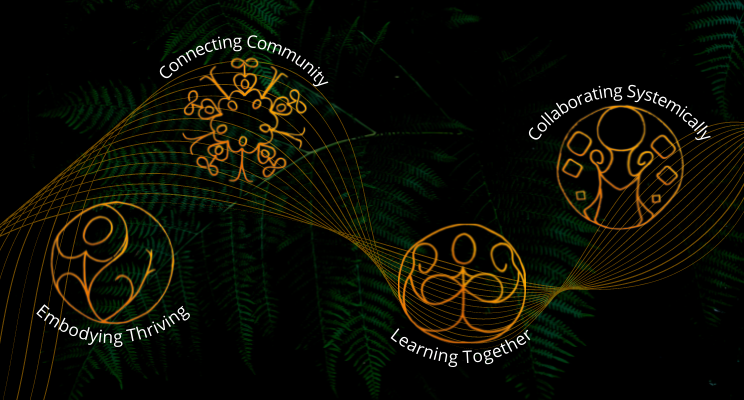
1. Embodying Thriving - Becoming inclined and equipped to thrive through practices that nurture personal, societal and ecological wellbeing.
2. Connecting Community - Creating conditions for diverse and inclusive communities in which people feel belonging and have a shared purpose.
3. Learning Together - Developing processes for cultures of continuous sharing, improvement and experimentation.
4. Collaborating Systemically - Fostering cooperation for strategies that transform systemic mechanisms and mindsets.
Embodying Thriving

Weavers become inclined and equipped to thrive through practices that nurture personal, societal and planetary wellbeing [7]. They embody life-affirming qualities and virtues. Inner and outer development are truly interdependent. Personal well-being includes emotional, physical, mental and spiritual dimensions and our sense of belonging, purpose and contribution. Societal well-being relates to how we create cultures that center on equity, thriving and justice. Planetary well-being refers to the thriving of all species, ecosystems and places. Weavers bring these different layers together in a coherent practice.
Weavers cultivate virtues and steward thriving cultures:
- Cultivating an inner awareness to stay present in uncertain situations.
- Showing up with vulnerability and heart-centered listening.
- Developing compassion for diverse people and beings.
- Being playful and creative in the face of challenges.
- Fostering wisdom through continuous inquiry.
- Embodying resilience in the face of adversity.
Reflection Question: What personal and collective practices to embody thriving more fully do you want to learn?
Connecting Community

Weavers create conditions for diverse and inclusive communities in which people feel belonging and have a shared purpose. They foster trustful, nourishing and dynamic relationships through patience and frequent communication. Sharing personal stories, needs and dreams are great ways to begin. As a solid foundation of trust is developing, people start to feel a sense of belonging. We are woven into an intricate web of life including diverse species and places. It is therefore critical to foster significant relationships with the wider natural world. And, to learn from nature's principles how to participate in diverse ecosystems.
Specific practices:
- Supporting the ecosystem through difficulties, roadblocks and failures.
- Maintaining momentum and direction through continuous alignment.
- Co-creating lived experiences of oneness with the web of life.
- Facilitating differentiated roles and sub-communities.
- Expanding distributed power and decision-making.
- Stewarding a common culture and identity.
Reflection Question: What skills do you want to learn to better support your communities to become more interconnected and aligned?
Learning Together

Weavers steward processes for cultures of continuous sharing, learning and experimentation. Learning is an ongoing process of 'becoming', which takes humility and perseverance. It is therefore essential to adopt a growth mindset, question blind spots and reflect often. Real learning happens when people meet between diverse perspectives and ways of knowing. Weavers, therefore, co-develop community-wide learning values, principles and aspirations. These are the basis for action-learning approaches that are grounded in the coherence of the head, heart and hands. Through constant learning, the ecosystem can remain adaptive and resilient in ever-changing circumstances.
Specific Practices:
- Designing, facilitating and harvesting collective learning experiences.
- Translating and contextualizing dynamic flows of learning.
- Using storytelling and visualizations to communicate.
- Developing reflective and contemplative practices.
- Collecting, synthesizing and evaluating data.
- Creating generative experiences in nature.
Reflection Questions: How can you center a beginner's mindset in your approach to weaving?
Collaborating Systemically

Weavers foster collaborative strategies that transform systemic mechanisms and mindsets. They seek to tackle the root causes of challenges instead of symptoms. This means paying attention to underlying systemic dynamics through sensing interconnections, relationships and energy flows. It is then possible to tackle root causes and leverage points for systems change. Based on these, an ecosystem can then implement targeted interventions. Over time, aligned action can fundamentally challenge and replace dominant institutions, mindsets and structures. So, through synergizing diverse efforts, it becomes possible to move a system towards a more thriving state.
Specific practices:
- Checking the health of an ecosystem and catalyzing continuous evolution.
- Co-creating, adopting and spreading transformative innovations.
- Supporting developmental evaluation to stimulate adaptation.
- Integrating theories of change of diverse collaborators.
- Organizing and resourcing strategies and projects.
- Mapping systems, networks and feedback loops.
Reflection Question: How can you support your collective to address systemic root causes through targeted action?
The Weaving Process ~ Learning from Circle Work
In order to understand how weaving works, we take one of its applications, 'Circle Work' and elucidate the process that it entails [8]. In 'Circle Work', a group of participants who align with an agenda gather together for co-sensing and co-creation, led by a skilled convener, who offers to hold space for emergence using a set of guidelines, a time frame and a purpose as the three guideposts. While ‘Circle Work’ has been around since ancient times, practiced by various indigenous cultures, its more modern applications range from community action to education to employee engagement. Even though the purpose of the gathering may be predefined, however, owing to its emergent nature, the outcomes of the session(s) cannot be predetermined.

The Working of a Circle
'Circle Work' starts with an articulated intention that is driven by a purpose and aligns with a group of potential participants. The circle convener volunteers to be a ‘space holder’ for what might want to emerge from the collective. A circle is situated in a specific moment of time, given a context that resonates with and binds a group of people who might be willing to gather in a space that is earmarked for weaving. This could be a virtual or physical space that is neutral and may provide a sense of safety for free expression.
Various elements which are at interplay in the process of weaving include human elements and non-human tangible and abstract elements. Human elements include the Circle Convenor or Weaver and participants; tangible non-living elements include the physical environment including 'Circle Principles' (guidelines which enable the creation of a safe space for sharing), sound, space layout and intangible elements include time, space, intention and consciousness of all those who are present.
A multitude of factors governs the nature of interplay among these elements making each circle experience unique and irreplicable. When in a circle, participants can be said to experience a transference of consciousness among themselves and with the center of the circle, thus unfolding and giving form to the group's emergent collective intention. It is for this reason that presencing is a key aspect of any weaving. Our individual state of being has a deep impact on what emerges in the collective.
The Flow of Circle Work
The proceedings of a circle start with a brief centering exercise in the form of meditative music or the playing of a singing bowl or the reading of poetry or spiritual text or simply leading participants into a mindfulness activity such as breathwork. Bringing all participants into their presence invokes the sacredness of the space. In a physical setting, the center might be set up as an altar with flowers, water, incense, a lamp and other elements that the host might find appropriate.
This centering is followed by a reminder of the circle principles or guidelines for engaging with the circle. These principles are to be viewed as gentle scaffolding and may be reviewed and revised by all as necessary. They uphold the core values of deep listening, confidentiality, inclusion, respect and authenticity that guide the circle members through their time together.
An open-ended question leads circle participants into the circle, thus setting the stage for the theme that might be pre-decided. Anchoring the circle in an inquiry enables a common purpose to unfold, thus allowing for new insights and action steps to emerge through a shared resonance among participants.
As the circle progresses, participants gain an opportunity to practice deep listening, thus opening themselves to new ways of thinking. Circles cultivate compassion and create a sense of inclusion for all. When convened on an ongoing basis, circles create a feeling of belonging and provide a fertile ground for sustainable change to take roots.
The closing of a circle is marked by a checkout which might be in the form of brief reflections by all or a compassion prayer, wishing well for all. A theme for the next circle might emerge at this point, thus allowing for the circle to ‘remain unbroken’ till the next gathering.
Success Criteria
Embodying gratitude, all participants are encouraged to empty their bowl of expectations and use the opportunity to offer their precious gifts, including deep listening and honoring silence when it is collectively called for.

Various formats of circles or related gatherings, referred to by a variety of names, are now being practiced around the world and signal the onset of a 'movement of movements [9].
Now What? - Our Invitations
1. Deepen your unique style of weaving
The beauty of working collectively is that you inherit your unique niche and synergize your role with that of other weavers. We, therefore, invite you to further experiment and make these practices work in your context.
2. Learn, co-create and spread weaving ways and practices
Together we can further build the field of weaving. This means learning, exchanging ideas and innovating together. So, find and co-create the spaces that nourish your learning.
3. Dive into additional resources, tools and perspectives
There are many articles, books, and guides out there that you can explore. To dive into more specific topics, you can use the hyperlinks in this article. To access further resources, review the references.
We invite you to join us in the inquiry of 'how does one balance the interplay of flow and outcome through the weaving process?' There is no formula for ensuring this balance and this is where the context of the individuals, the collective and the shared intention or purpose play a key role. While emergence is constant, the duration that it takes to accomplish the outcome of a weaving process might vary. There is no endpoint to weaving. We are part of a continuous process of evolution that always evokes new questions, challenges and opportunities.
Conclusion: Cultivating Our Weaving Practice
The Weaving Ways and Practices are an open-ended exploration of making sense of weaving. There is a wide variety of skills to learn and we cannot do that by ourselves. So, we warmly invite you to share your thoughts about this article. It is in the messy field between perspectives and worldviews that we can engage in weaving fully. Let us dream, dare and do everything in our power to co-create a more thriving world. We end with this poetic reflection, hoping it provides you with the inspiration we need to cultivate this work in our world:
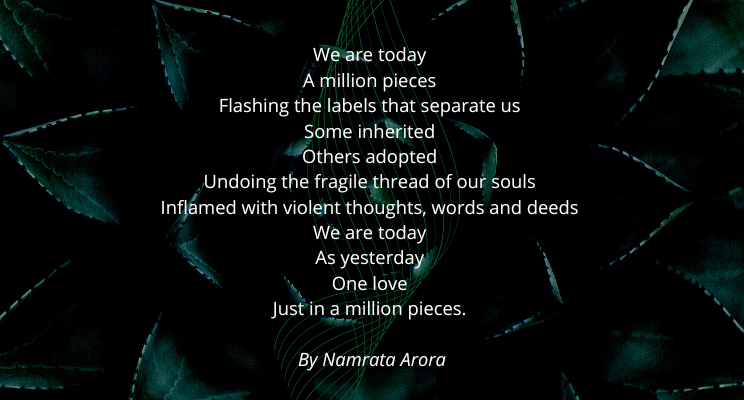
Acknowledgements and Gratitude
We thank every contributor to The Weaving Lab for the countless heart-centered conversations that created the weaving ways of practices. Specifically, we appreciate Tjin Tjoelker, Victoria Haro, Ben Roberts, Ross Hall, Carolina Obara, Kai Brouwer, Robyn Whittaker and Nick Graham for their generous feedback. Lastly, we acknowledge every one of you who is embodying more thriving on the planet, including the land and our non-human kin.
About The Authors

Contact her via: LinkedIn or E-Mail.

Contact him via: LinkedIn or E-Mail.

You can also download a pdf with a link to this guide to save to your personal library by visiting the Network Weaver Resource Page.
Resources
[1] State of the World:
- Climate Change 2022: Impacts, Adaptation and Vulnerability by IPPC
[2] Indigenous Knowledge:
- Sand Talk - How Indigenous Thinking Can Save the World By Tyson Yunkaporta
- Braiding Sweetgrass by Robin Wall Kimmerer
[3] Regenerative Leadership & Networks:
- Designing Regenerative Cultures by Daniel Christian Wahl
- Regenerative Leadership - The DNA of life-affirming 21st-century organizations By Giles Hutchins & Laura Storm
- Leading from the Emerging Future: From Ego-System to Eco-System Economies by Katrin Kaufer and Otto Scharmer
- Impact Networks: Create Connection, Spark Collaboration, and Catalyze Systemic Change by David Ehrlichman & The Converge Network.
[4] Definition and practice clusters by The Weaving Lab
[5] Facilitation:
- The Surprising Power of Liberating Structures: Simple Rules to Unleash A Culture of Innovation by Henri Lipmanowicz and Keith McCandless
- The Art of Hosting
[6] Inner Development:
- Thich Nhat Hanh Interbeing: The 14 Mindfulness Trainings of Engaged Buddhism
[7] Thriving:
- The Age of Thrivability: Vital Perspectives and Practices for a Better World by Michelle Holliday
- Thrive: The Third Metric to Redefining Success and Creating a Life of Well-Being, Wisdom, and Wonder by Arianna Huffington
[8] Hosting Circles:
- The Magic of Circle Work by Jalaja Bonheim
- The Circle Way by Ann Linnea and Christina Baldwin
- A Millionth Circle by Jean Shinoda Bolen
[9] Blessed Unrest by Paul Hawken
Originally published HERE
featured image found HERE

Network Weaver is dedicated to offering free content to all – in support of equity, justice and transformation for all.
We appreciate your support!
donate in the box above or click here
What do we mean by “community”?
July 18, 2022Blog,Equity,Liberating Structuesequity,Systems Change,Community
Since the inception of Building Belonging, we’ve wrestled internally with this question: what are we? On our homepage we say we are:
A home for people committed to building a world where everyone belongs… We are a community of people working toward transformation and liberation: of ourselves, our societies, and the world.
And yet our gathering place is on Mighty Networks; so clearly we see ourselves at some level as a network as well.
So we’re a home. And a community. And a network. What does that mean, exactly? How do we organize ourselves? How do we make decisions? And as money flows through the system and we face the legal/financial imperative to adopt a structure… are we also an organization?
I don’t want to speak for Building Belonging here; we are in the middle of our second interim Stewardship Process, precisely to take a collective perspective on questions like this. But I did want to share my own intentions in case it’s helpful to others wrestling with these questions in their own communities/networks/organizations; I see this question as a key point of differentiation in the social change ecosystem that feels important to name.
1. I am interested in building a community, not an organization. I love this definition from
Aaron Goggans and team at Wildseed Society (which I see as a kindred initiative to BB):
We define community as a group of people with such important or valuable interrelationships that it is easier to have the difficult conversations than walk away. It’s a space where we agree to labor together to root out domination from our praxis and replace it with more liberatory ways of meeting our needs.
2. The kind of community I’m interested in co-creating is synonymous with the concept of “political home.” That is, it must contain two components. A “home”: a space of nourishment, resilience, support, safety, deep commitment to each other, and comfort. And it must also be “political,” meaning we are gathering in order to transform: ourselves, each other, and the world. It’s a space of stretch, of intentionally pushing ourselves to change material conditions in our community (as a fractal) and in the world.
There are other communities that are only or primarily about “home,” and communities that are only or primarily about “political.” Building Belonging — for me — is an effort to co-create a political home. Both things are essential. I resonate with how adrienne maree brown describes it:
Political home…is a place where we ideate, practice and build futures we believe in, finding alignment with those we are in accountable relationships with, and growing that alignment through organizing and education.
Yes! This is what I mean when I talk about Building Belonging as a “future dojo”: it’s a place to practice in the present… the future we long for. It’s prefigurative.
3. Communities require shared cultural norms. Absent direct deep relationships among all the members (which becomes impossible with growth beyond a certain point), structure is what codifies those norms: structure provides guidance on how we “be” together. It is the walls and furniture and doors that help people know how to navigate the community, where to sit, how we cook and clean together, etc. This is the space around “liberatory governance” that I find so compelling. And if we want to have any hope of co-creating the self-organizing future we long for… liberating structures are essential.
4. Communities require active leadership (I prefer the term stewardship). I love
Vanessa C. Mason’s reflections here:
Communities don’t just happen. They are intentionally built and stewarded by official and unofficial community weavers.
Yes: weavers inside and across communities. This echoes the core insights that
Fabian Pfortmüller has so beautifully captured in his work. Which means we will need people (in dynamic roles!) who are taking responsibility for stewardship. If we see Building Belonging as a commons, a fractal of the whole, than stewarding the commons is both a collective/universal responsibility, and a specific defined responsibility.
We aspire to self-organization, but it’s a long way from here to there. Humans aren’t yet a murmuration of starlings; we have to remember those skills, cultivate the capacity that’s been stolen from us. Until then, we depend on the contributions of stewards to create the conditions for everyone to step fully into community.
Alanna Irving is blunt on this point. She says:
There’s no such thing as self-organization. There’s only unseen, unacknowledged, and unaccountable leadership.
I love Parker Palmer’s 13 ways of looking at community (hat tip to Building Belonging member Sara Huang for pointing me to them):
Community requires leadership, and it requires more leadership, not less, than bureaucracies.
5. The kind of communities I’m interested in are also networks: people connected in diverse ways around a shared purpose. In this I’m drawn to the insights emerging from the network weaving community around how we cultivate connections;
David Ehrlichman’s new book on Impact Networks is a great overview of the field.
6. Community is a place to share gifts and needs; to thrive, everyone has to contribute. We all make community real in different ways. My gift might be for synthesis, for distilling and naming patterns amid complexity. Someone else’s gift might be holding space for conflict or big emotions; someone else might have a gift for art, music, or film: these are all equally welcome. Part of my hope for Building Belonging is to be able to create the conditions (norms, structures, culture, ways of relating) to enable people to step fully into their gifts; we aren’t there yet. I love
Deepa Iyer’s work here naming different roles in social change.
7. Community is the only sustainable form of support. I love this line from Esther Perel, commenting on this global moment of polycrisis and accelerated change, when our dominant systems are collapsing and we find ourselves unmoored:
Community is the only thing we have at this point… real life embodied experiences where people come together.
I’ve been thinking about this provocative line from Tyson Yunkaporta:
The only sustainable way to store [information] long term is within relationships.
I might expand that sentiment: it’s the only sustainable way to do anything. Buildings will crumble; the power grid will fail; the supply chain will break. The only thing we have to turn to, reliably… is each other.
Anyway, obviously lots more to say here, but wanted to put out some initial thoughts. I’d love to hear what resonates for others, what doesn’t, and how you’re making sense of this in your own lives and work.
In community (political home :-),
Brian

Brian Stout is a systems convener, network weaver, and initiator of the Building Belonging collaborative. His background is in international conflict mediation, serving as a diplomat with the U.S. Agency for International Development (USAID) in Washington and overseas. He also worked in philanthropy with the Bill & Melinda Gates Foundation, before leaving in early 2016 to organize in response to the global rise of authoritarianism and far-right nationalism. He recently returned to his hometown in rural southern Oregon, where he lives with his wife and two children.
originally published at medium.com

Network Weaver is dedicated to offering free content to all – in support of equity, justice and transformation for all.
We appreciate your support!
donate in the box above or click here
Energy System Science for Network Weavers: A Summary
July 12, 2022Transformation,Blog,SystemsSystems Change,Network Weaving,network weaving
“Culture is a verb.”
– Rowen White, Seed Keeper, activist and farmer from the Mohawk community of Akwesasne
“It’s all about how things are flowing.”
– Gwen McClellan, acupressurist and holistic healer
“A living body is not a fixed thing but a flowing event, like a flame or a whirlpool.”
– Alan Watts, philosopher and writer
“Seeing energy flows so that we can engage with them in positive ways is not some mystical, esoteric art, but the role of engaged human beings.”
– Joel Glanzberg, permaculturist and sustainable builder
Last week I teamed up with Dr. Sally J. Goerner, who stewards a transdisciplinary team of researchers and practitioners in the Research Alliance for Regenerative Economics, to offer an interactive session to The Weaving Lab on the Energy System Sciences and how they might support network weavers working for social change in a variety of contexts. Energy System Sciences (ESS) is “an umbrella term for disciplines that use the study of energy flow networks to understand the laws of systemic health, growth and development in living, nonliving and supra-living systems.” ESS disciplines include: Chaos, Complexity, Resilience, Ecological Network Analysis, Self-Organization Theory, Nonequilibrium Thermodynamics, Panarchy, and others. It was a lot to present and absorb and process during our short 2 hour session, and so I have made an effort here to summarize and simplify …
Everything is made up of energy, so says “western” science and also many wisdom traditions (think spirit or chi) and indigenous peoples (see Sherri Mitchell), but many of us often don’t like to use the word “energy” (too woo woo). And perhaps that is to our detriment! Switching from a “matter” orientation about everything to an “energy” view can help us see and do things differently.
Systems are complex networks of interconnected “parts” that work together. Flows of energy of different kinds are crucial for a system to function (carbon in the biosphere, traffic in cities, supplies and information during a disaster response, ideas and emotions in a social group, nutrients on a farm, money and other resources in economies).
The Energy System Sciences (ESS) see all systems as “flow networks” or structures that arise from the circulation of resources, information, nutrients, etc. Thinking through the lens of flow, systemic health can be seen as being based on things like: investment and re-investment of key and diverse resources, healthy outflows (not polluting or poisoning the ecosystem), the velocity and spread of resources in the system, cross-scale circulation, etc. The nature and quality of these flows determines how systems are able to adapt and evolve in healthy and health-promoting ways.
ONE BIG PROBLEM now is that there is a dominant narrative stemming from the power and influence of oligarchy (rule of and for the few) and oligarchic capitalism (economies that are run by and support the few), which seeks to increase the wealth of “elites” at the expense of most people and the planet. Narrative, in contrast to story, is a way of looking at the world. In a sense, it’s a big story that influences thought, meaning and decision-making. The dominant oligarchic narrative and view is grounded in things and beliefs like “the divine right of capital and kings,” a master/slave mentality, dominance, supremacy ( based on race, gender and other markers of identity), narcissism, coercive hierarchies, “survival of the fittest,” and self-interest.
The oligarchic view cuts against the evolutionary promise of the Energy System Sciences in that it gets in the way of the kinds and qualities of flows needed to keep the whole body of humanity healthy and in right relationship with the planet. It prevents pro-social and pro-ecological evolution. For example, at a smaller scale, if we only privilege a certain part of our physical bodies (our heads or brains) over and at the expense of other parts of our bodies (for example, our hearts, our guts), this can have damaging impacts for the neglected parts and our entire bodies, and diminish our intelligence. Science is increasingly showing that our hearts and guts give us access to important information about the world around us. And our health and development are being shown to rest upon more integration and coherence between the different biological systems that make us up (digestion, vascular, nervous, etc.).
Against the oligarchic capitalist view is another view of humanity as being a collaborative learning species that can ground itself in common-cause and cooperative culture (including values of equity, justice, fairness, trust, transparency, mutualism) and seek resilient and regenerative economies and other systems that guarantee long-term human thriving for the many and for the diverse and not just the few and the alike. This narrative and set of beliefs aligns with the Energy Systems Sciences. Together they suggest that to support healthy and health-promoting webs and flows, it is important for groups of people to integrate the following core pillars, economically (especially in the etymological sense of the word – “household management”) and culturally:
- Circulate diverse resources regeneratively, at and between different scales/levels
- Create and sustain flexible and resilient structures of different and balance sizes
- Ground in common-cause values such as mutuality, trust, transparency, equity, justice, fairness, accountability
- Engaged in collaborative learning that supports intelligently adaptive responses and actions
For example, as Sally Goerner lifts up the following (it may be helpful to click on the image below):

We can also bring attention back to our own selves and how we interact with others to see how the energy system sciences can guide us. We can have stagnant energy if we are not inviting new ideas in or not releasing emotions. We can quickly get overwhelmed if we open ourselves to too much energetic flow of information or emotion, especially if it is negative or challenging. If our bodies are not structurally strong and flexible, they can be more prone to dis-ease. If our social organizations are overly rigid, they can be un-responsive to change and unable to adapt accordingly. If we are not having honest conversations with one another, that “clear the air” (and move energy through as it needs to), we can get bogged down in unhealthy interpersonal dynamics. The emotional body language and tone we convey energetically can impact our interactions with others (and flow widely in larger networks!). If we are not attending to what is otherwise sealed away in our insides (which equates with dissociation) this can also have impacts on how we are with ourselves and one another.
Bottom line: We share a hope that many more of us can become adept energy and flow scientists, artists, healers, weavers and workers as we intentionally create patterns that are the basis of the better world we sense is possible and know is necessary.
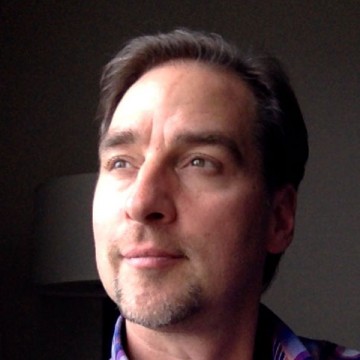
About the Author:
Much of Curtis Ogden's work with IISC entails consulting with multi-stakeholder networks to strengthen and transform food public health, education, and economic development systems at local, state, regional, and national levels. He has worked with networks to launch and evolve through various stages of development.
Originally published at Interaction Institute for Social Change
featured image found HERE

Network Weaver is dedicated to offering free content to all – in support of equity, justice and transformation for all.
We appreciate your support!
donate in the box above or click here
